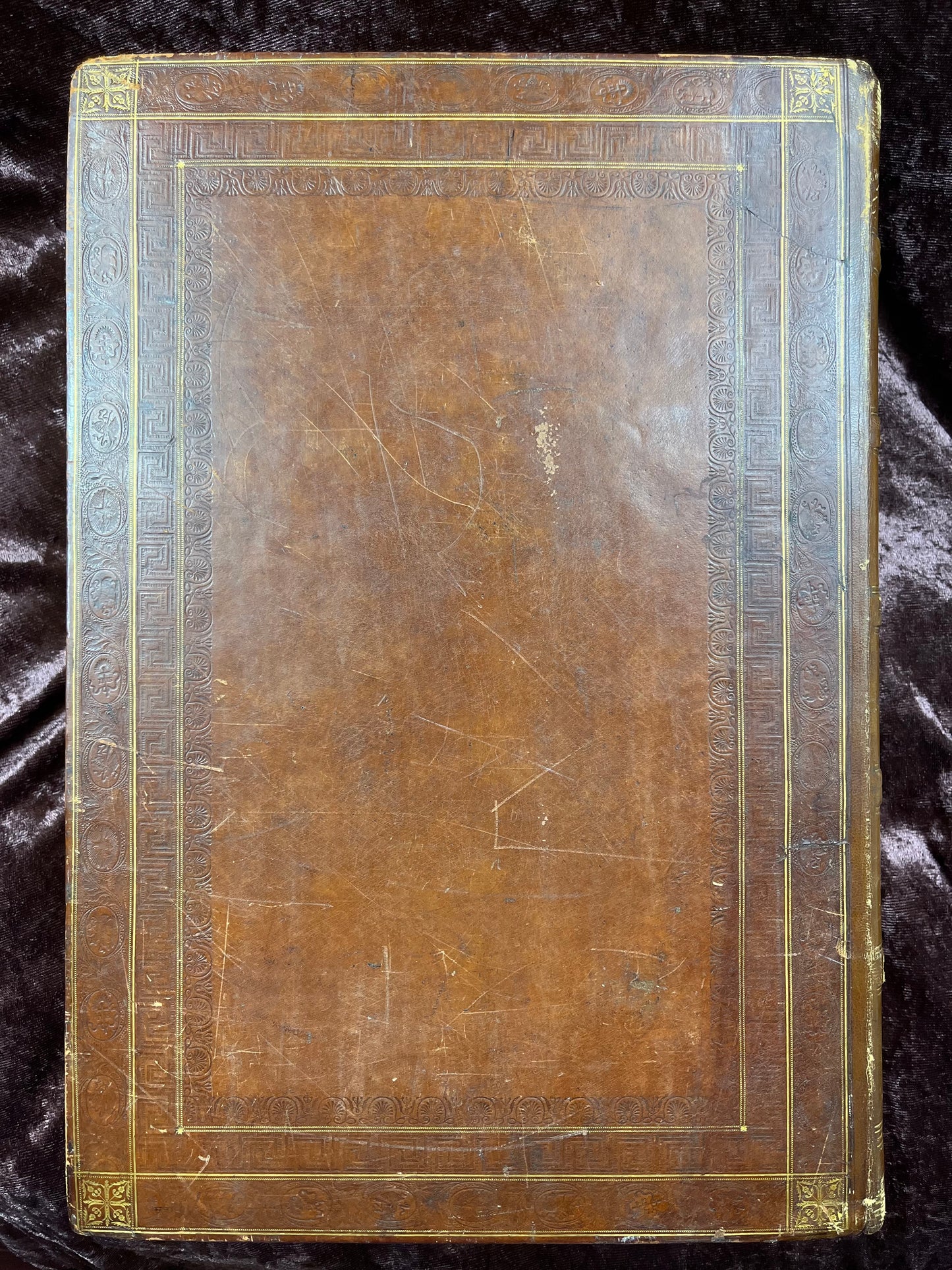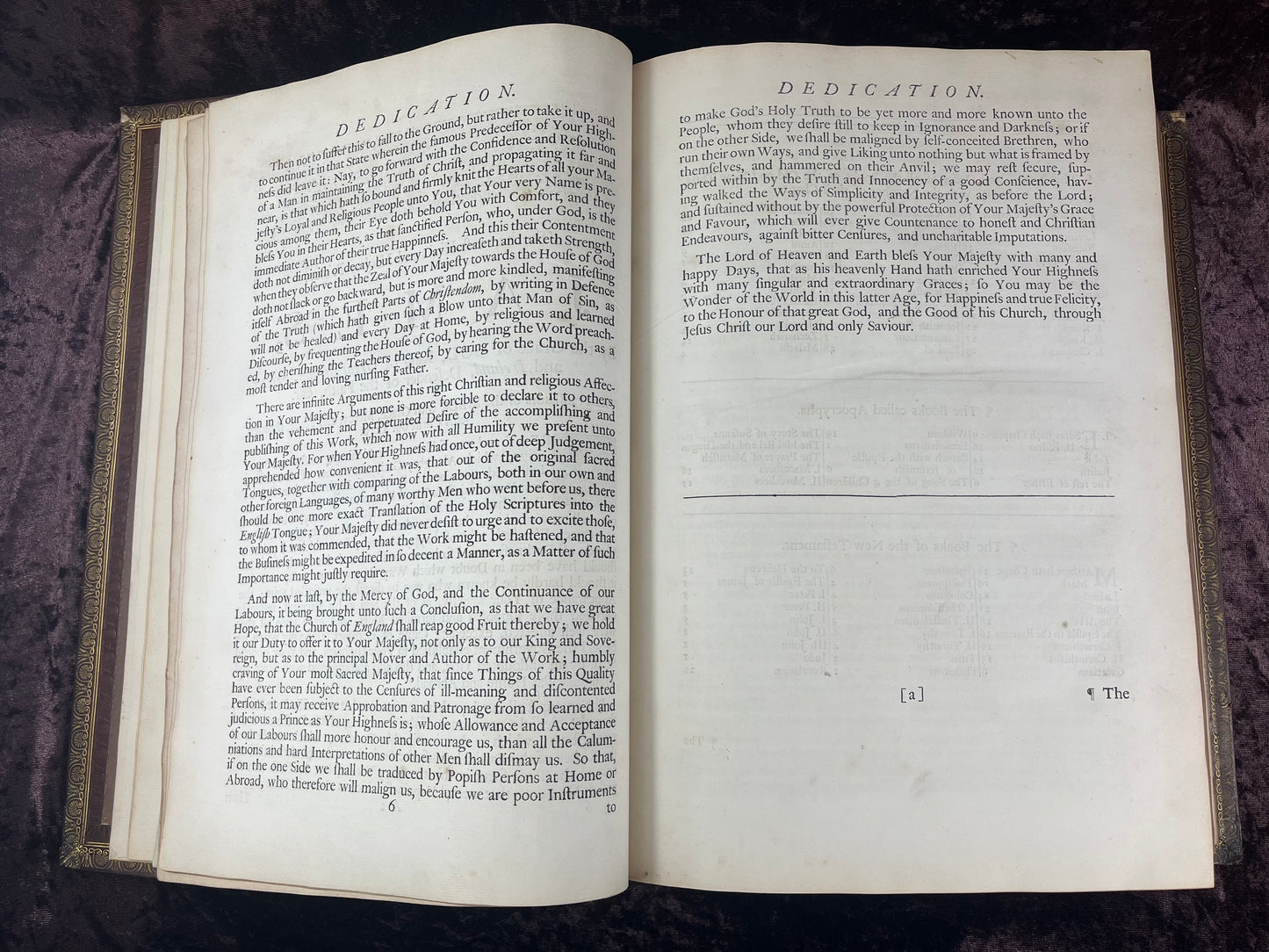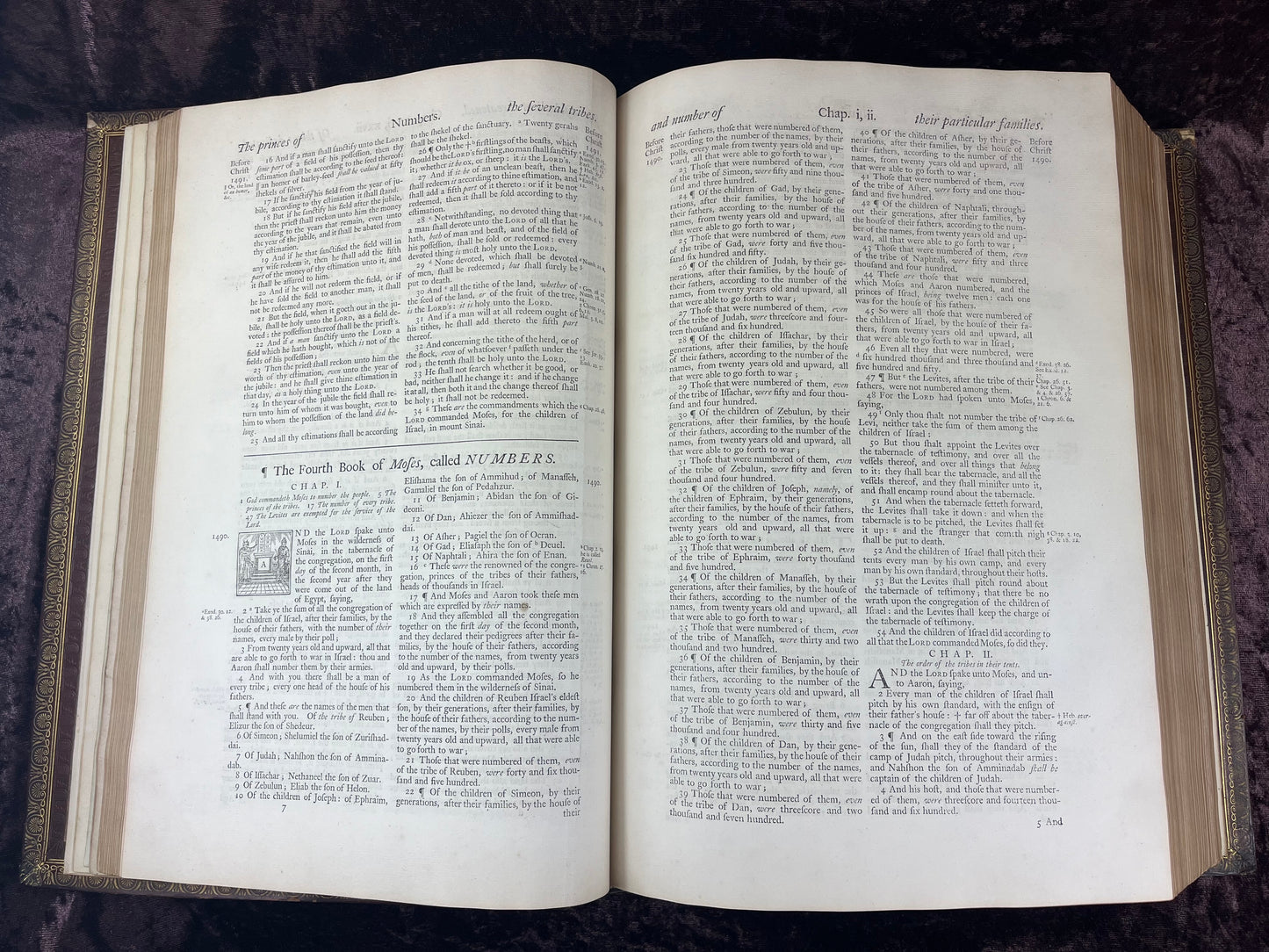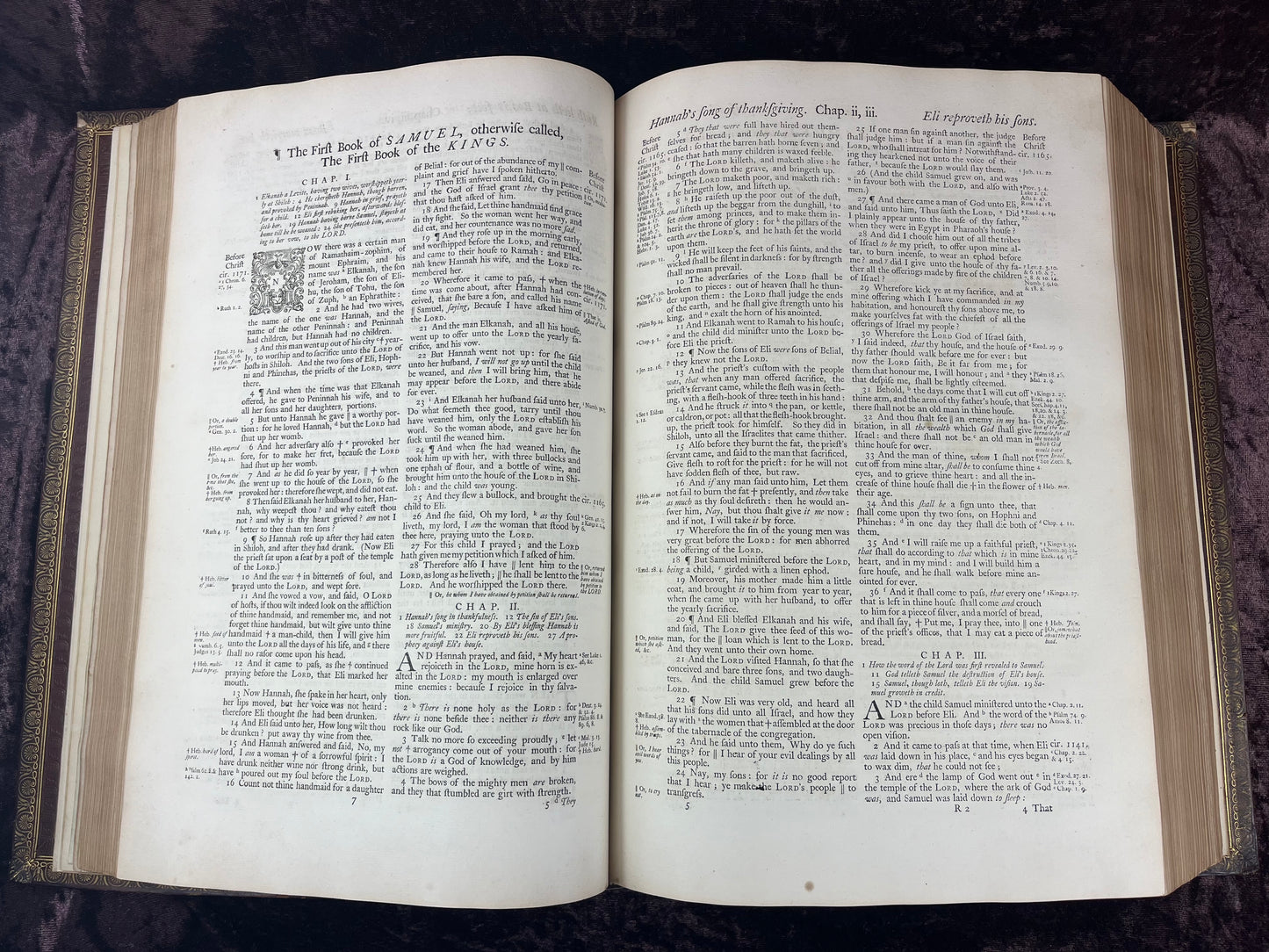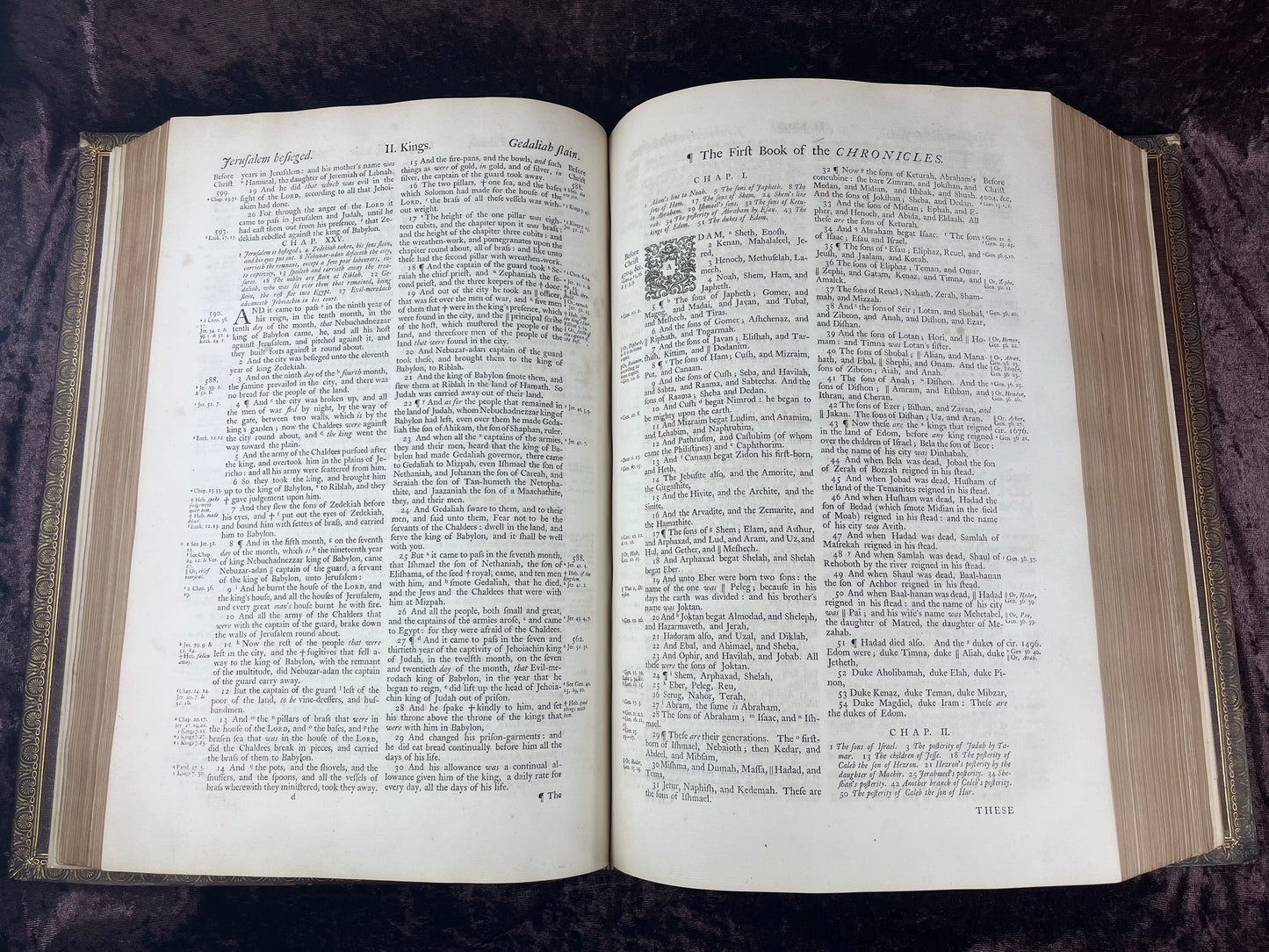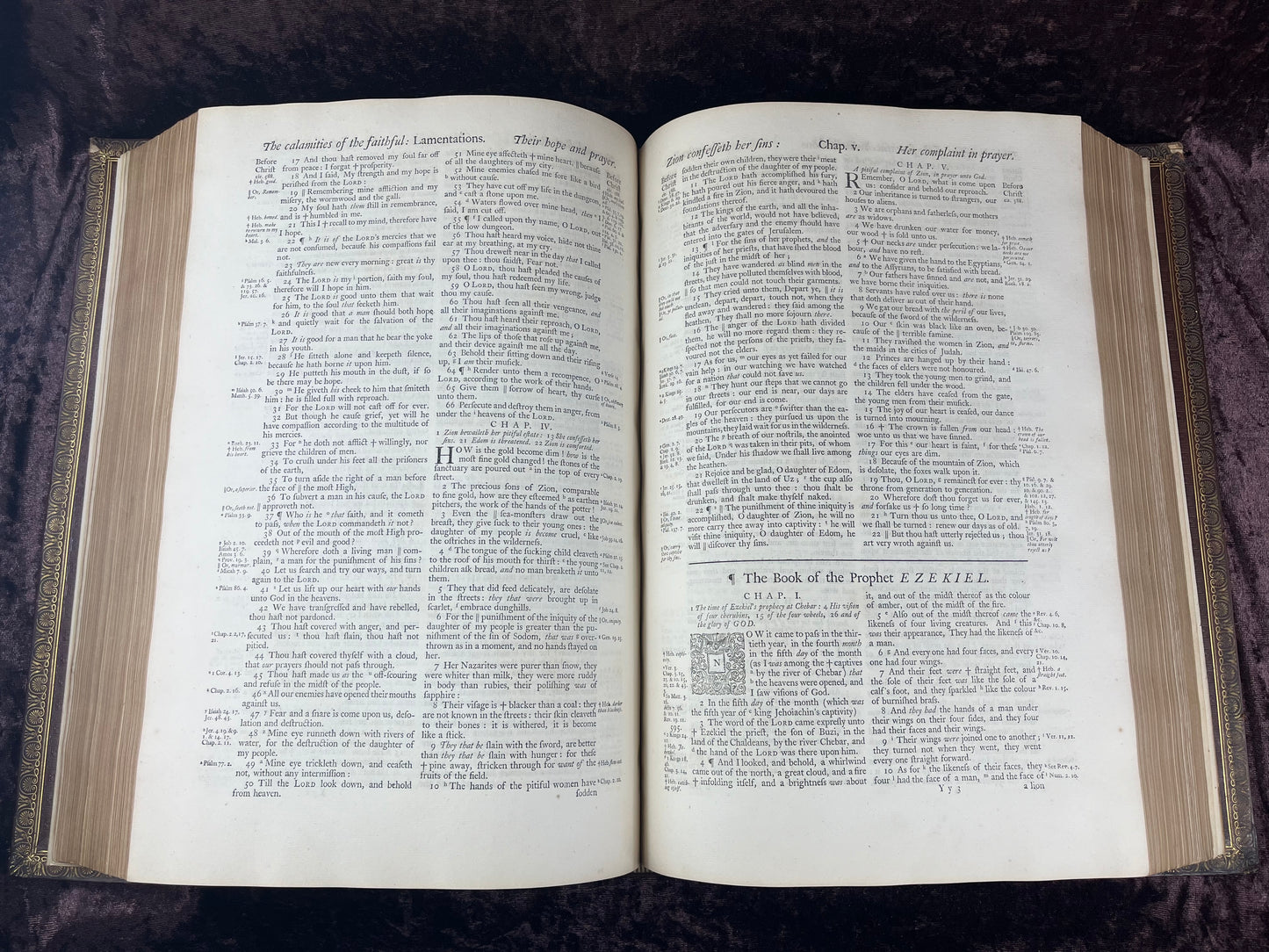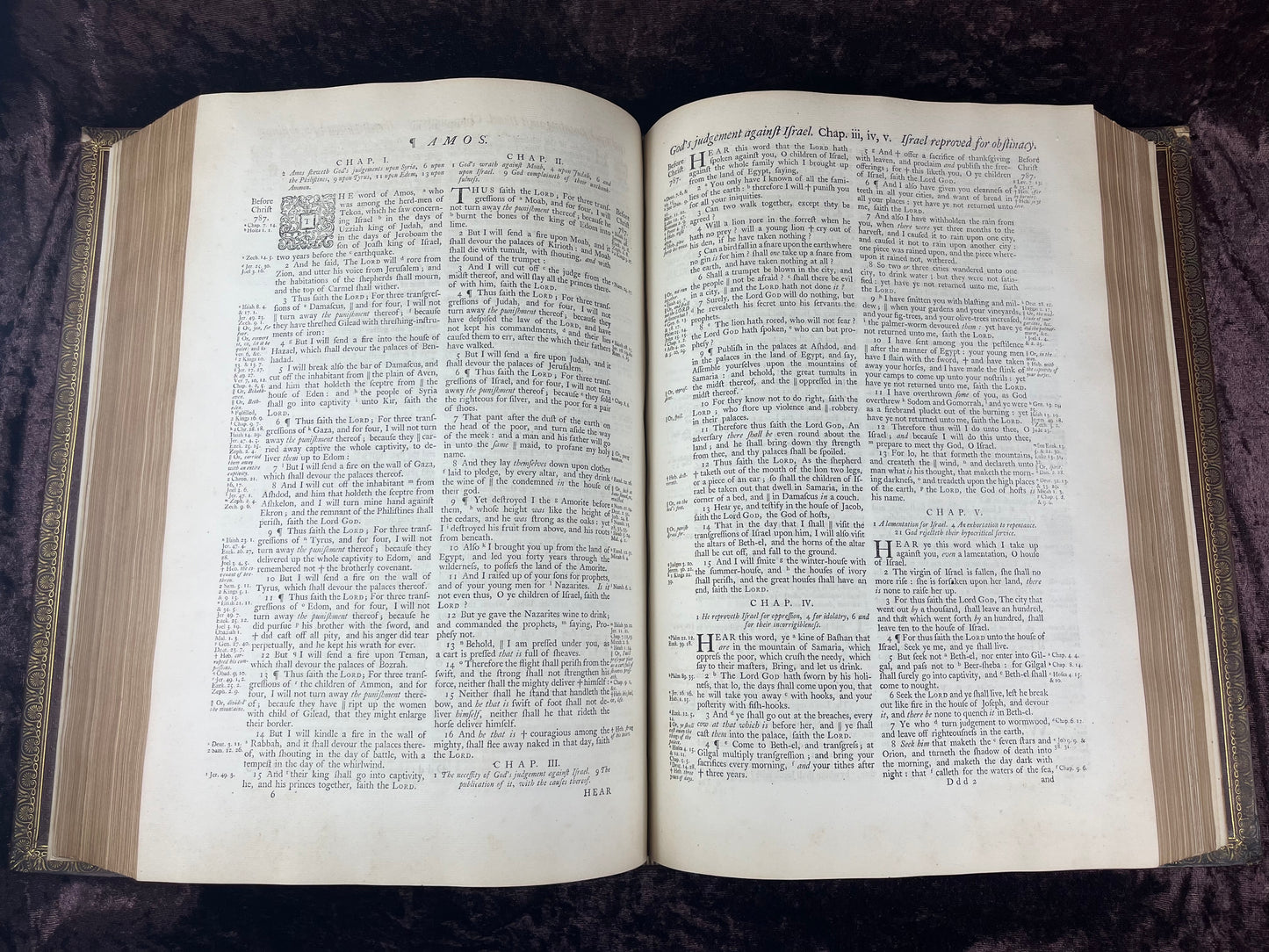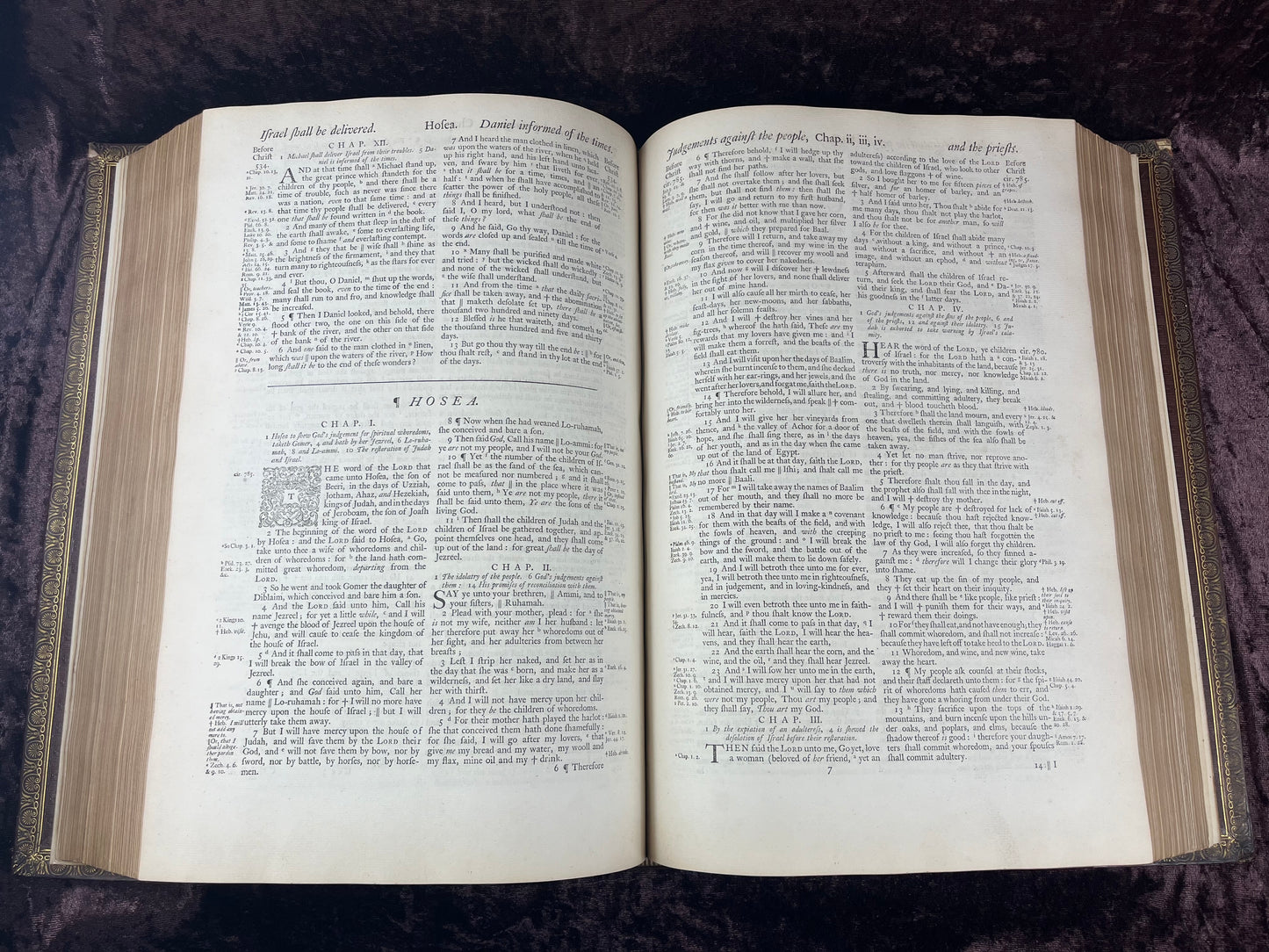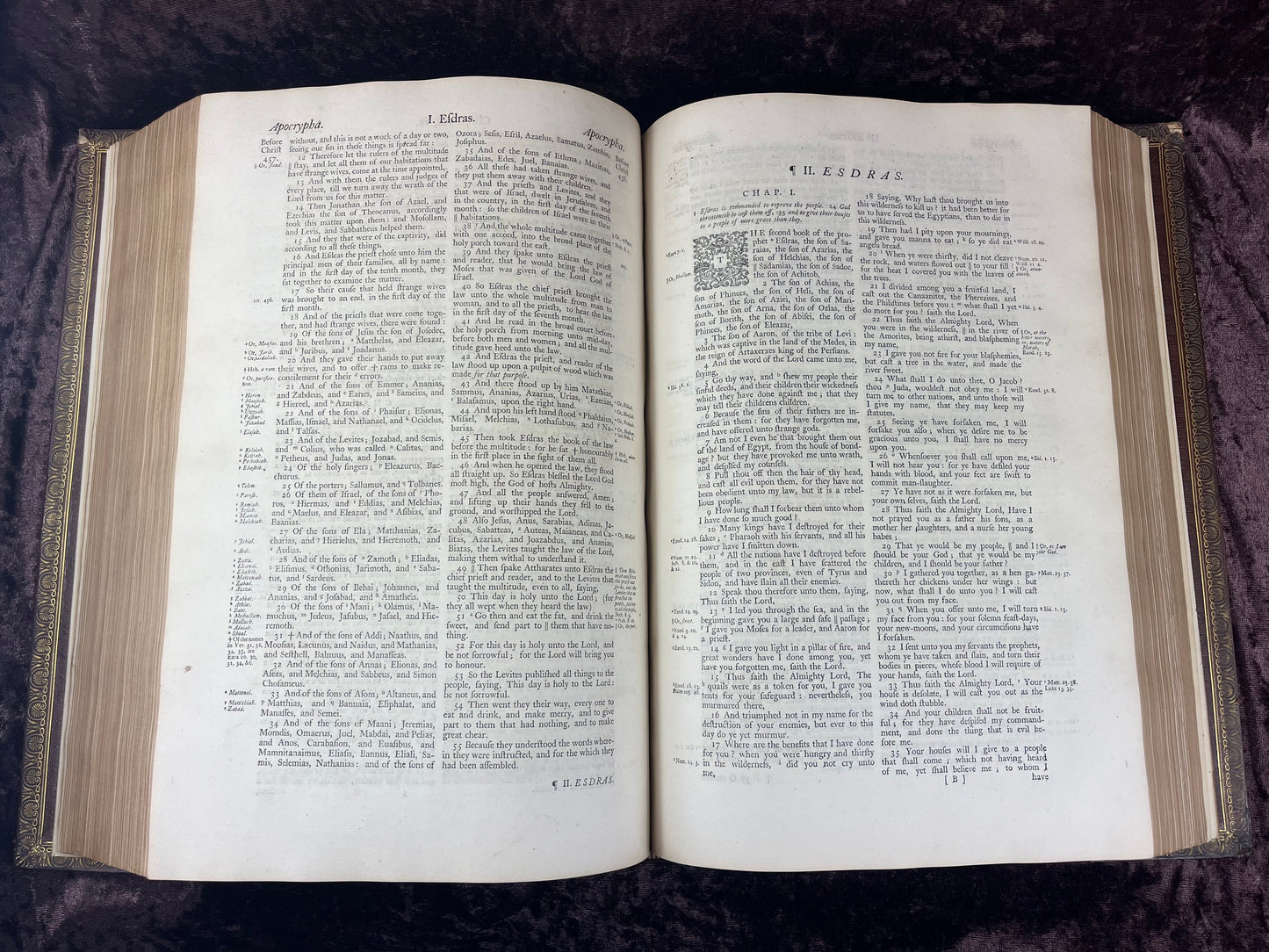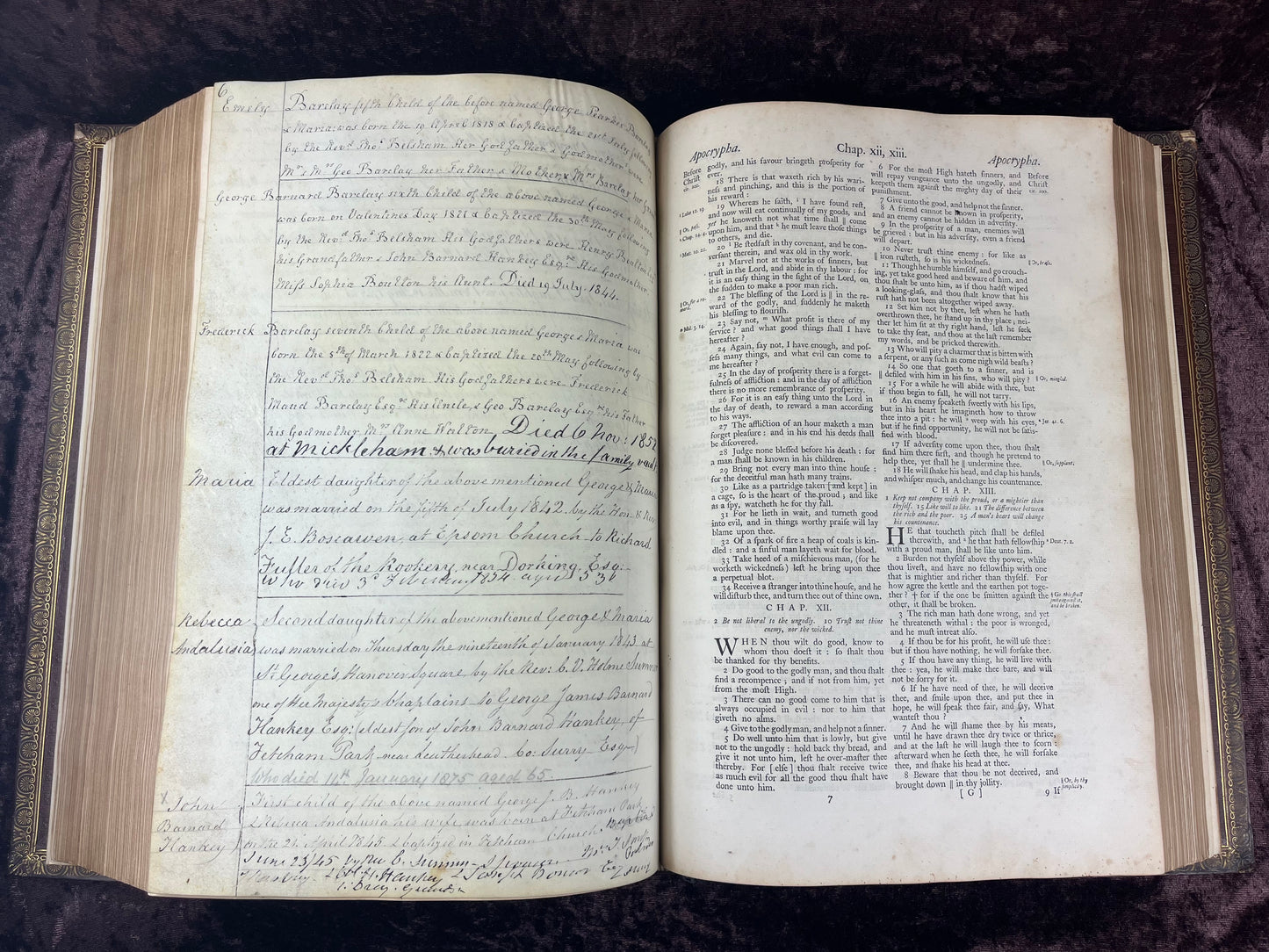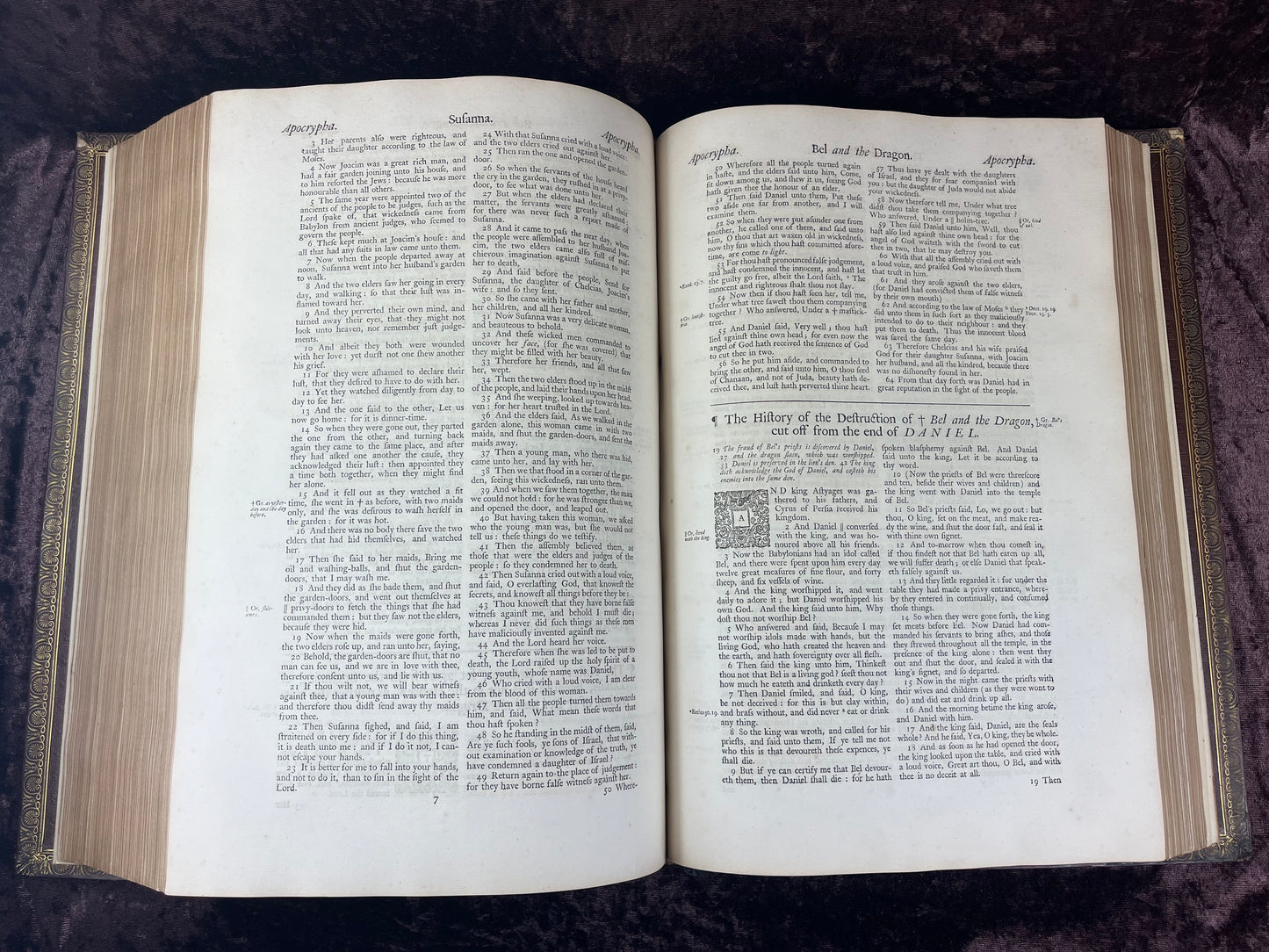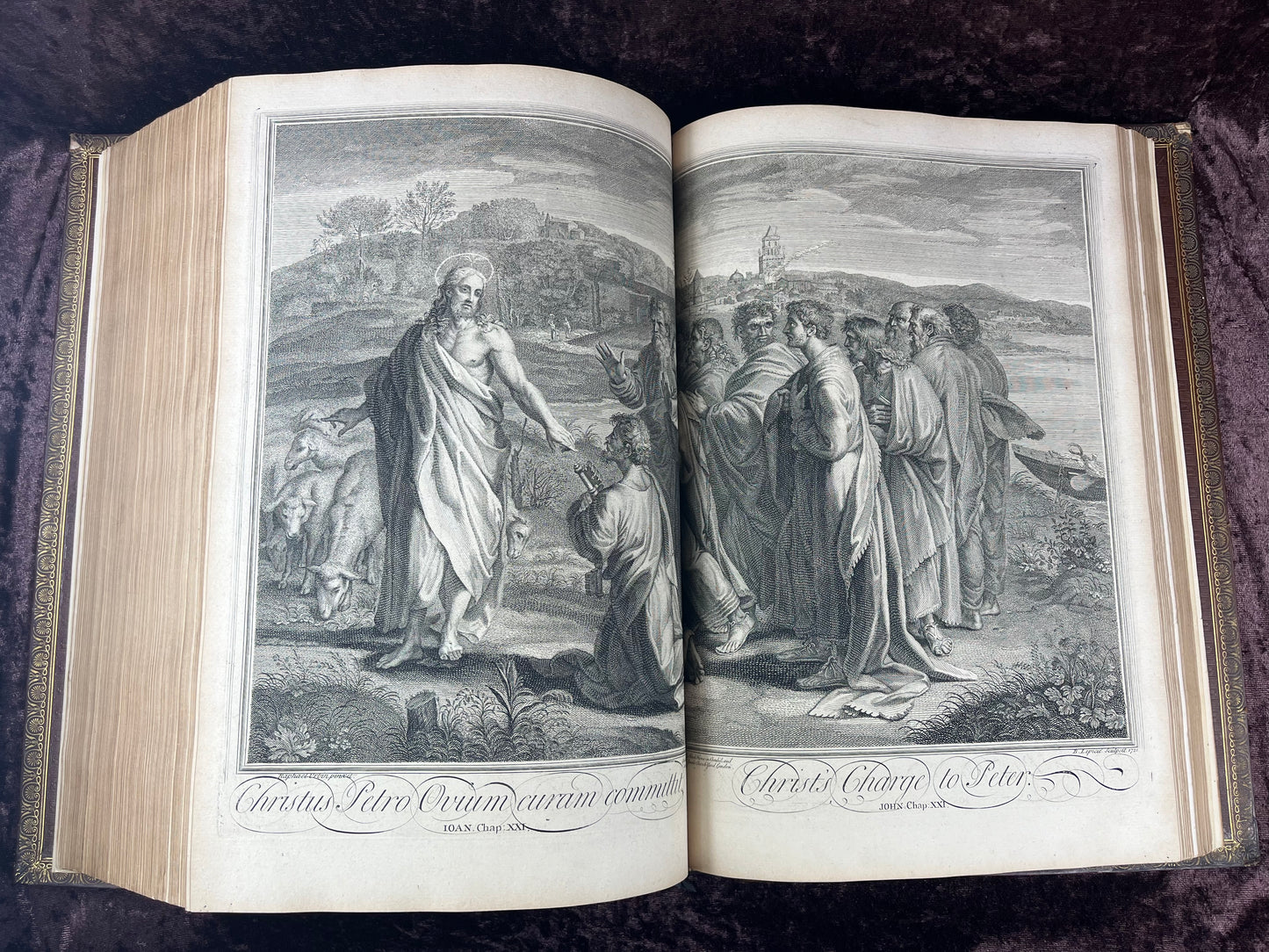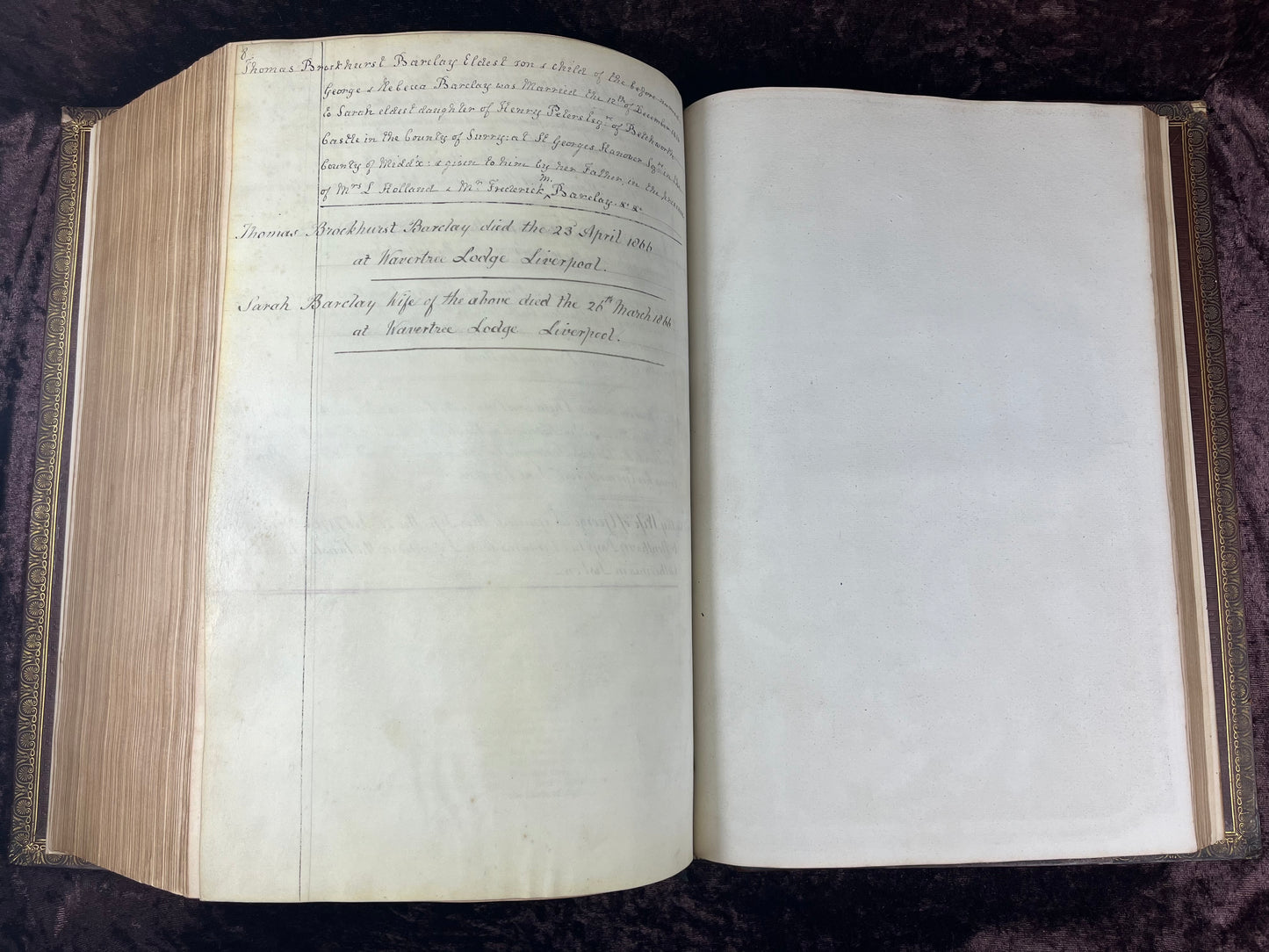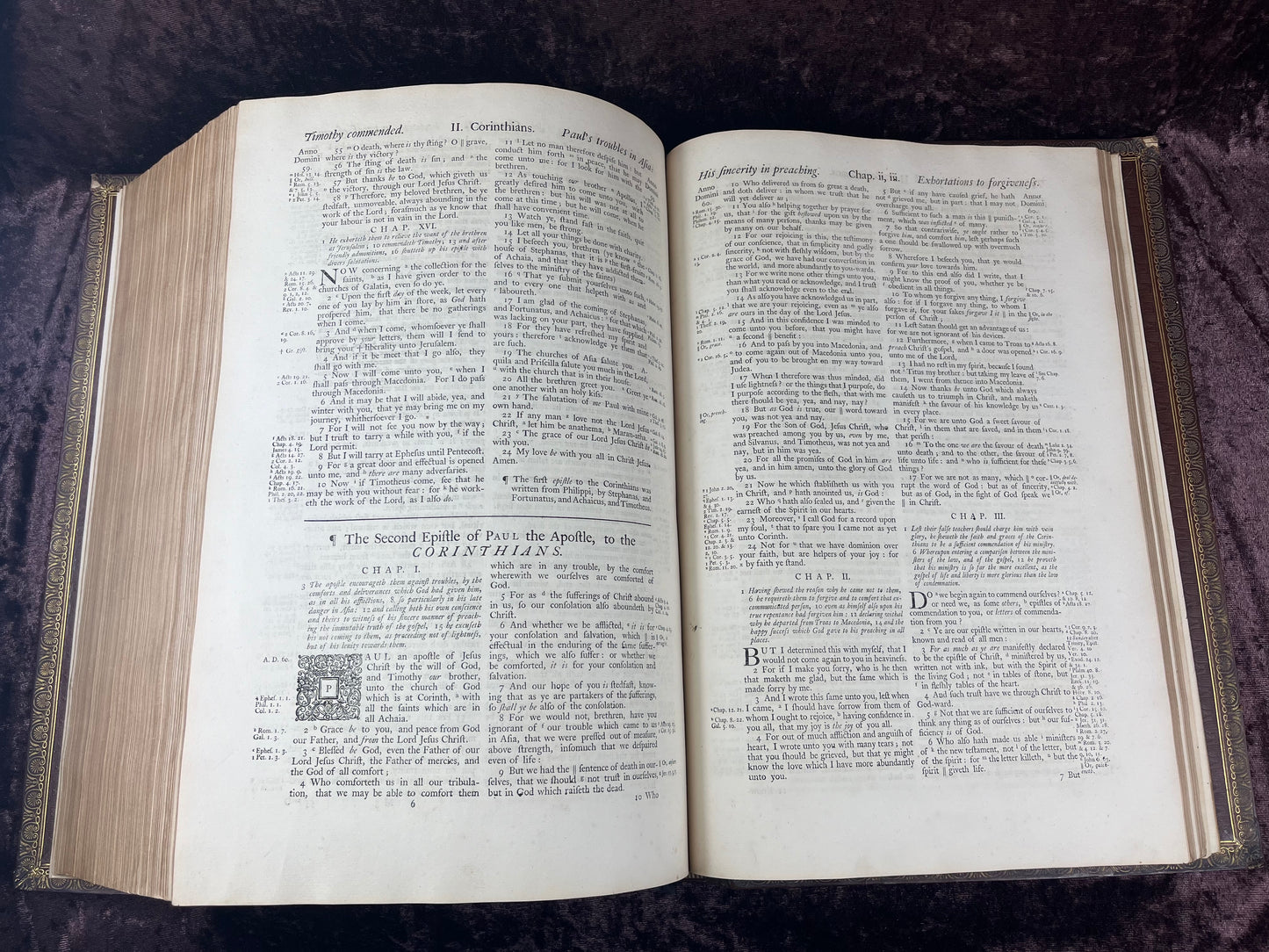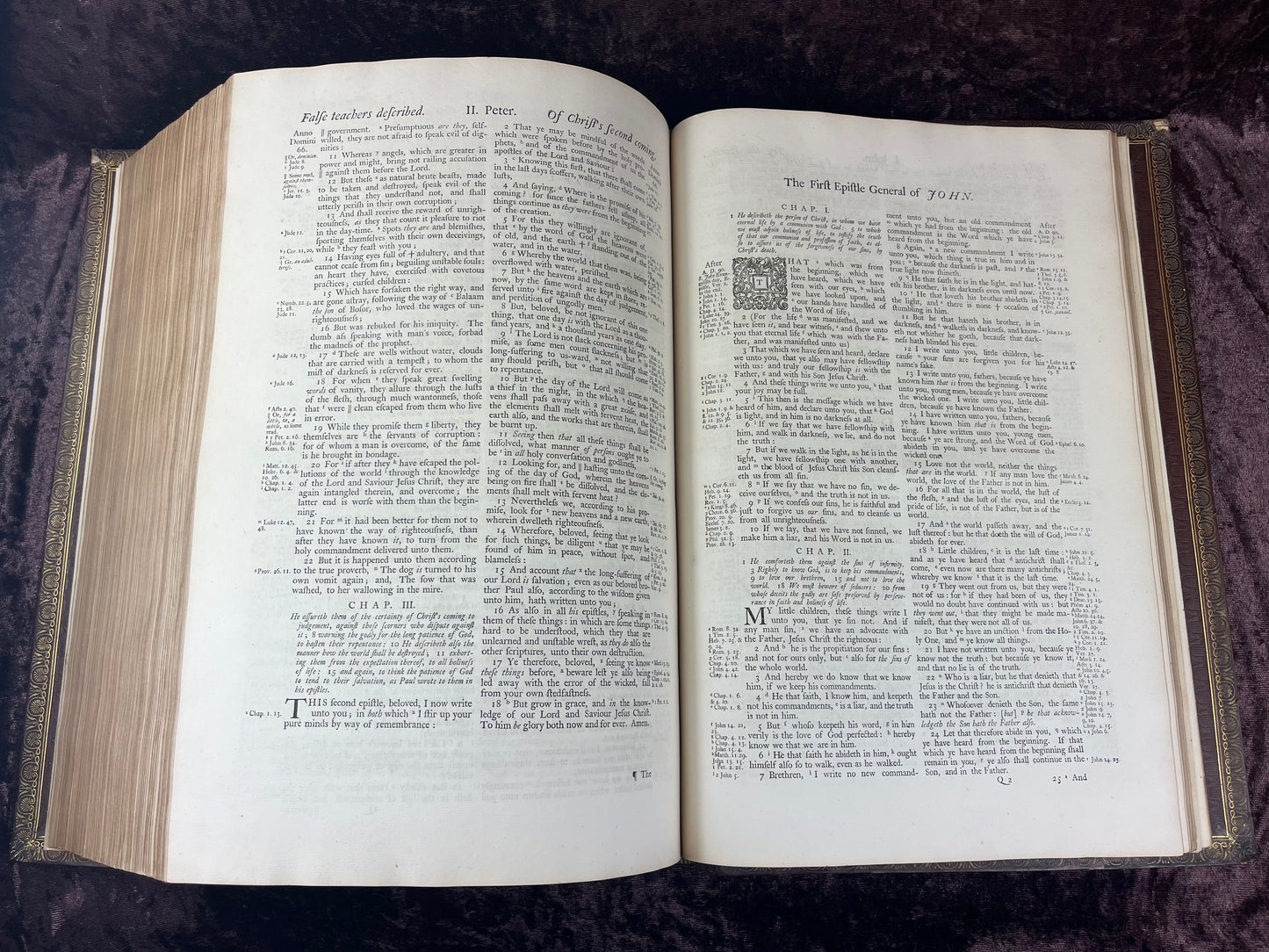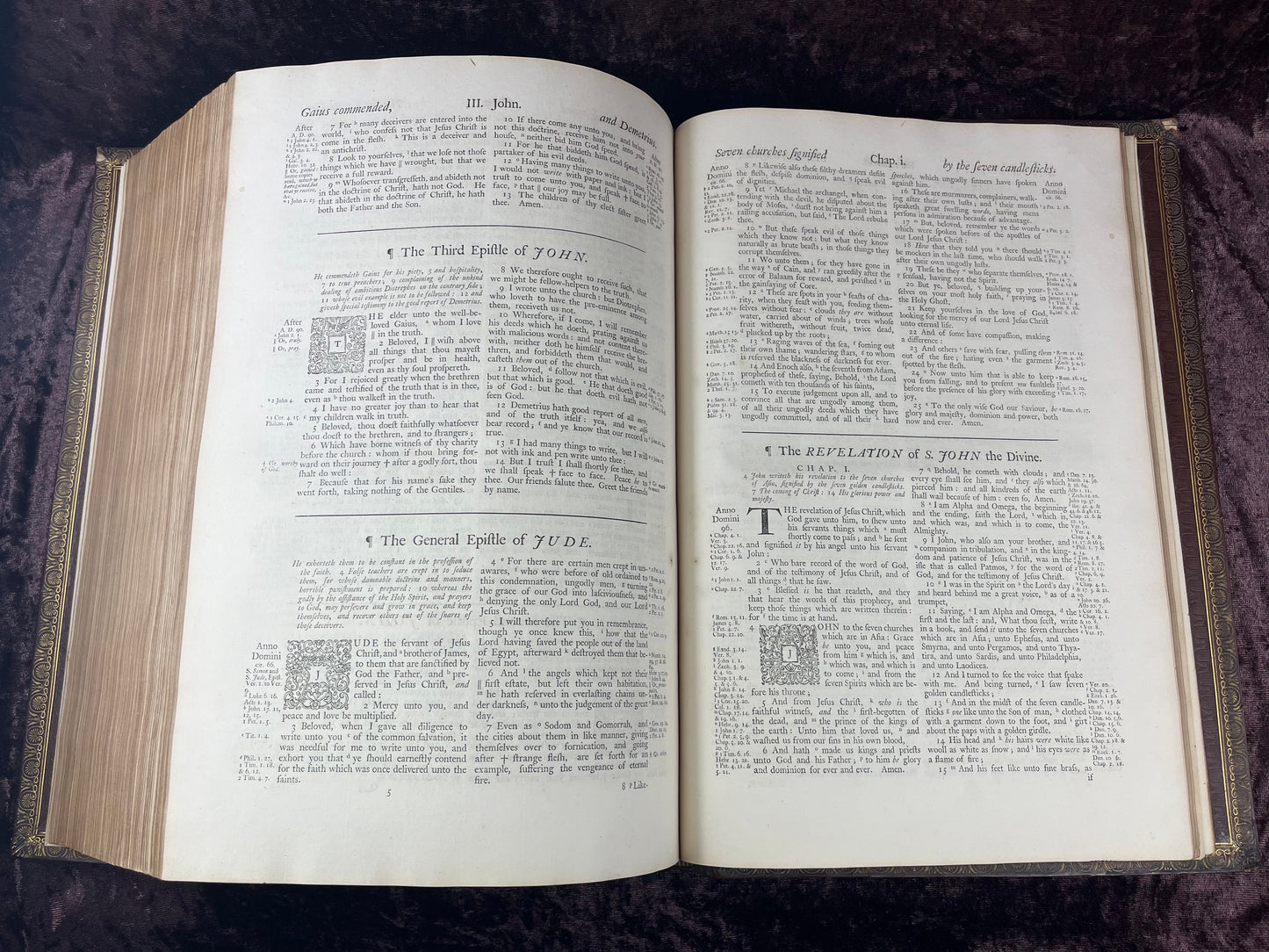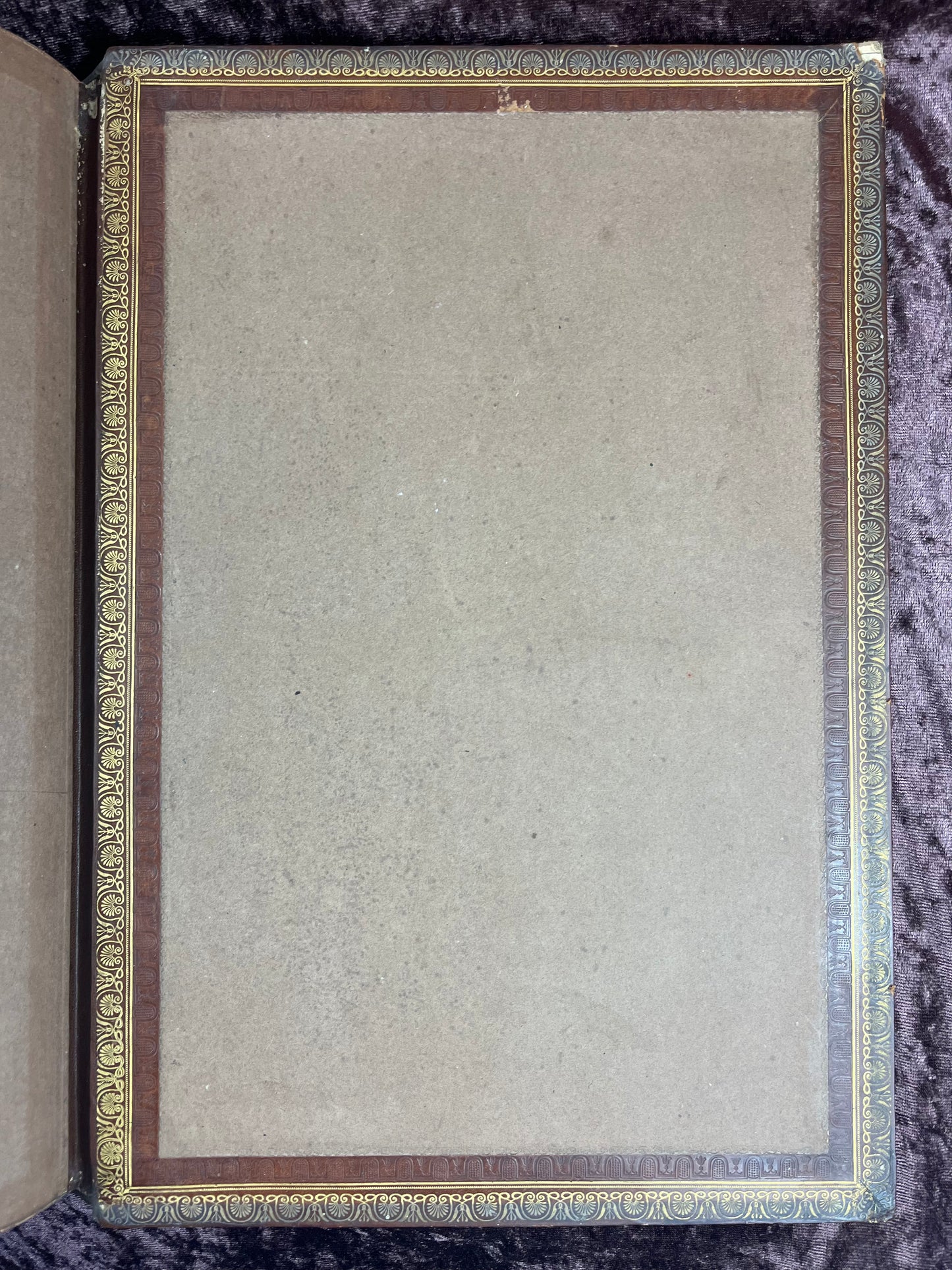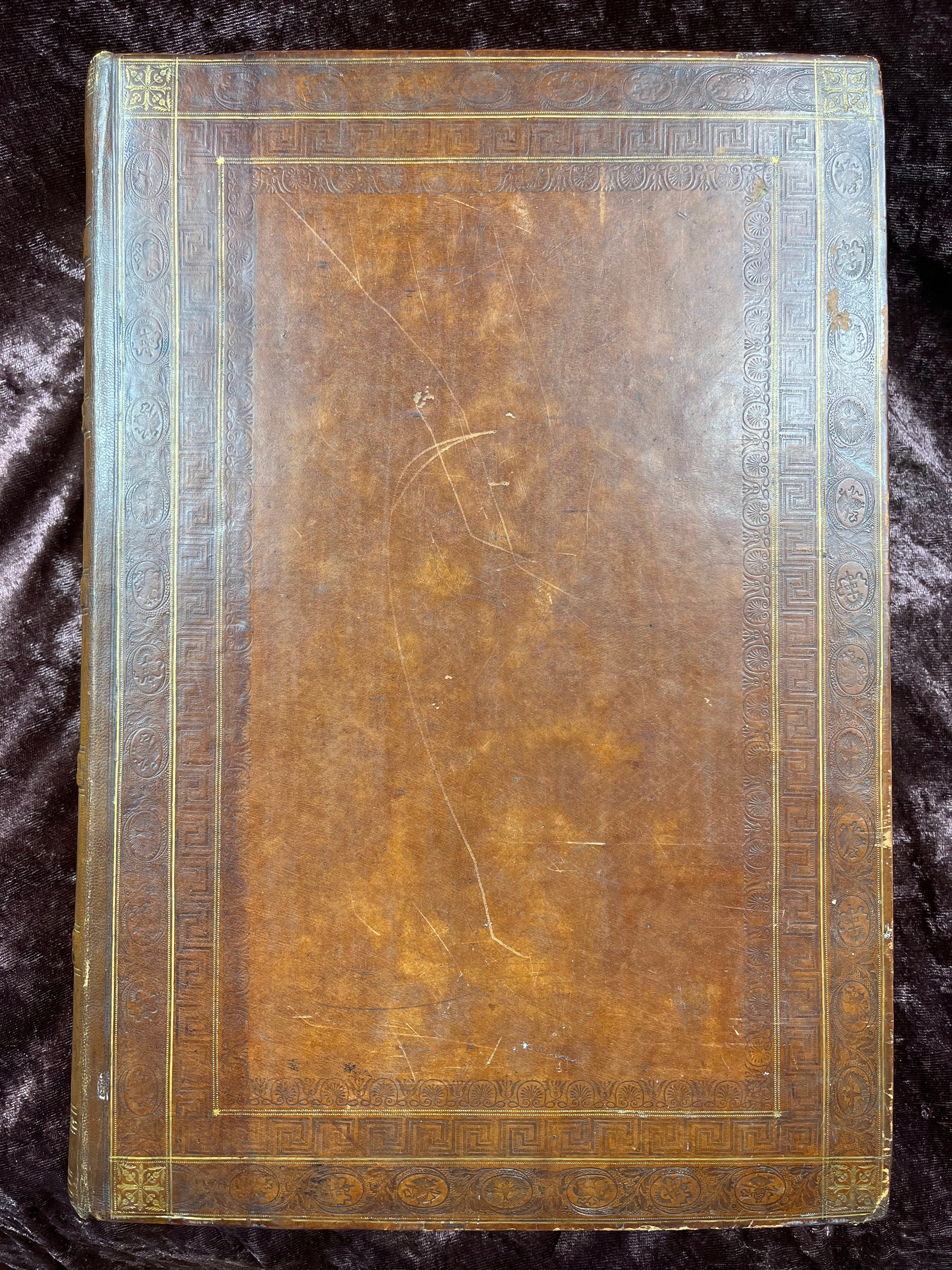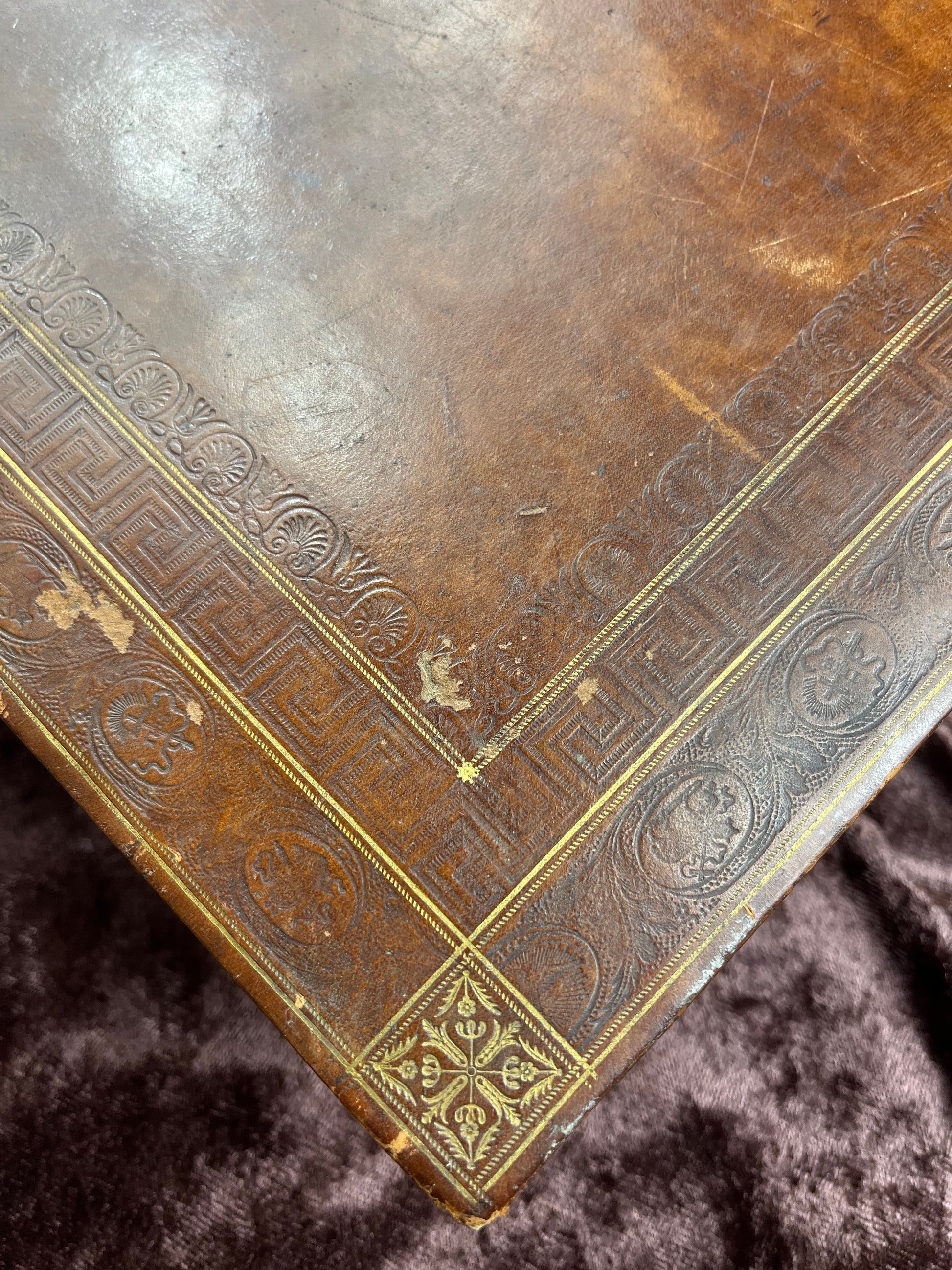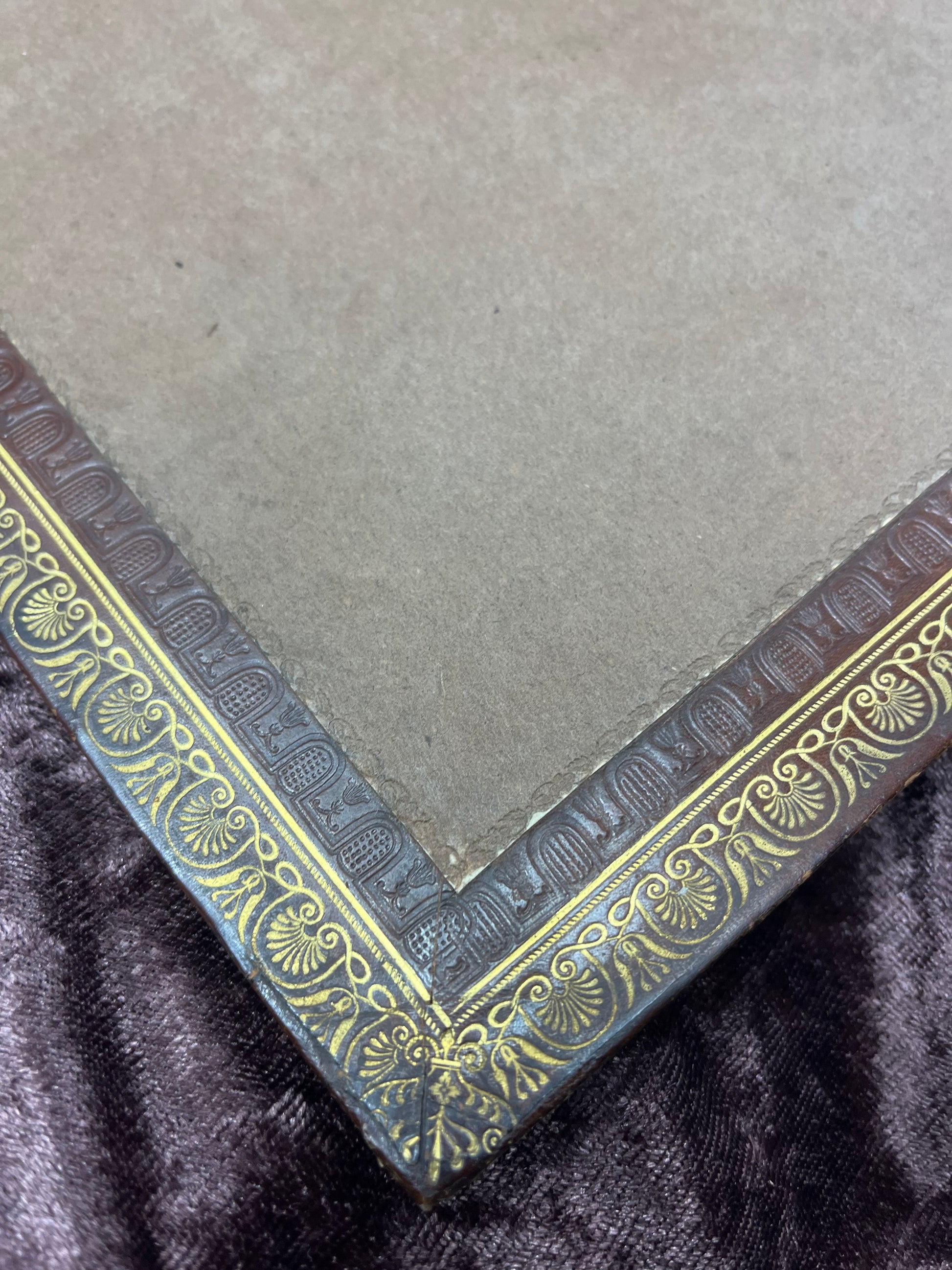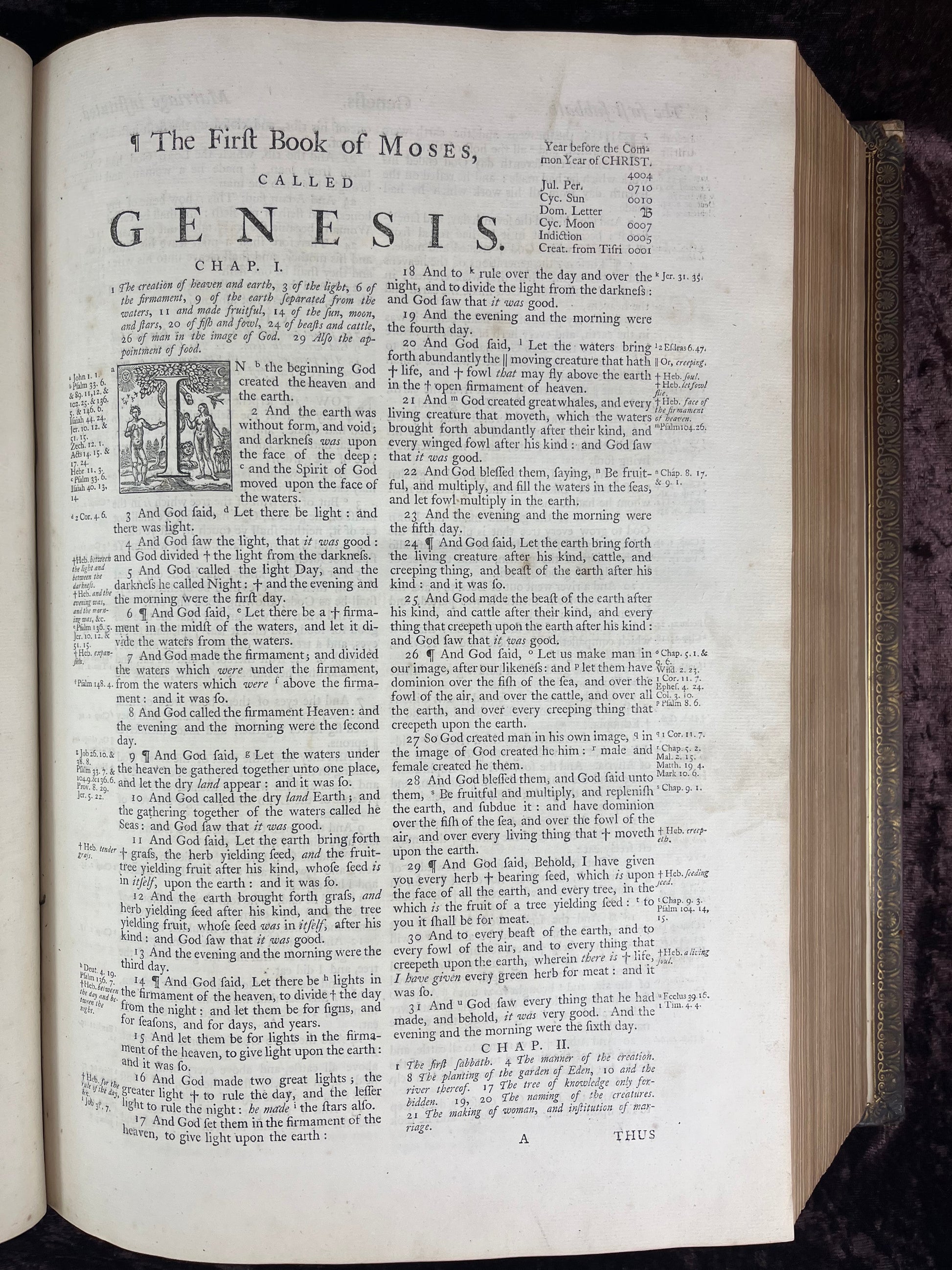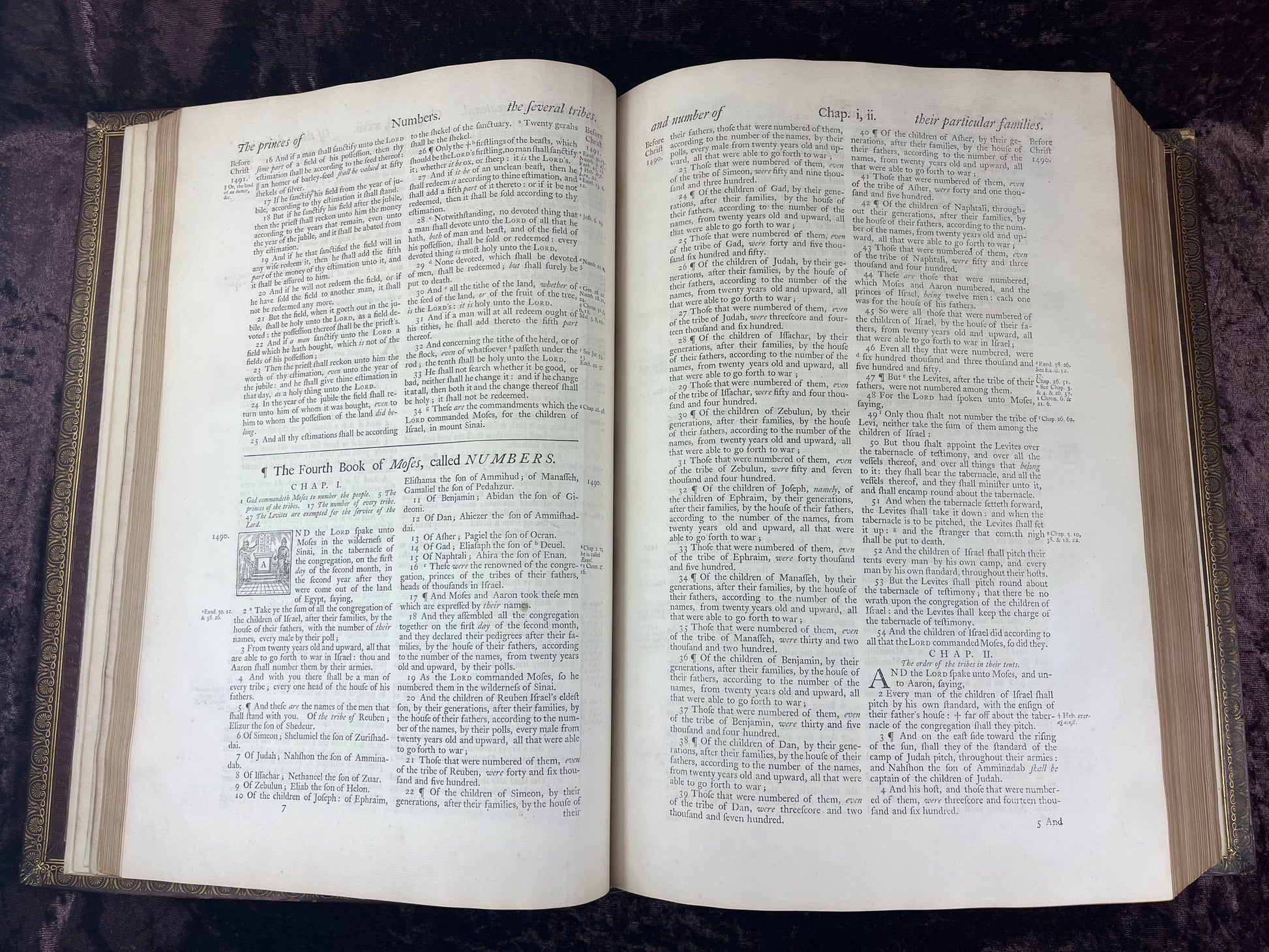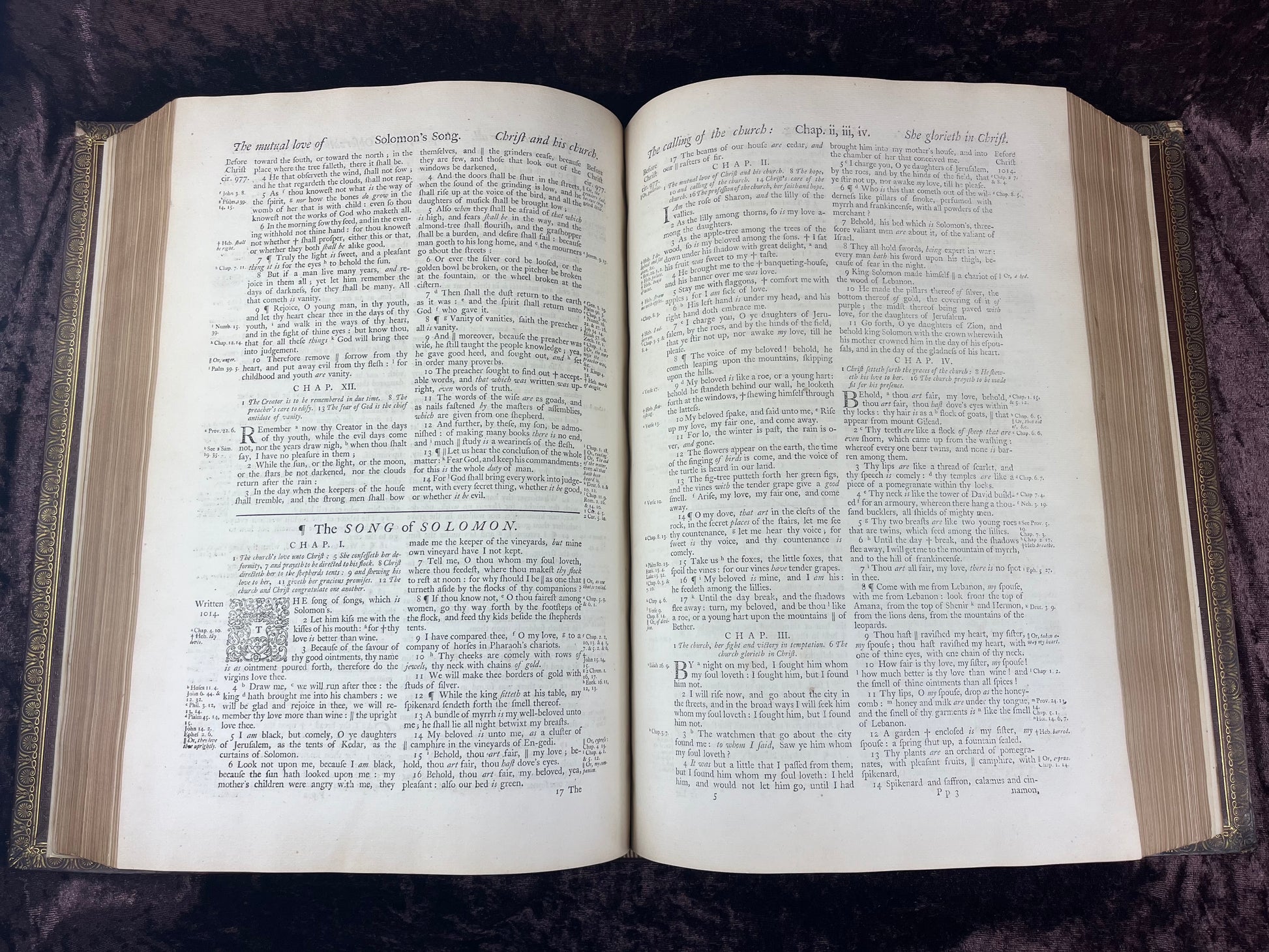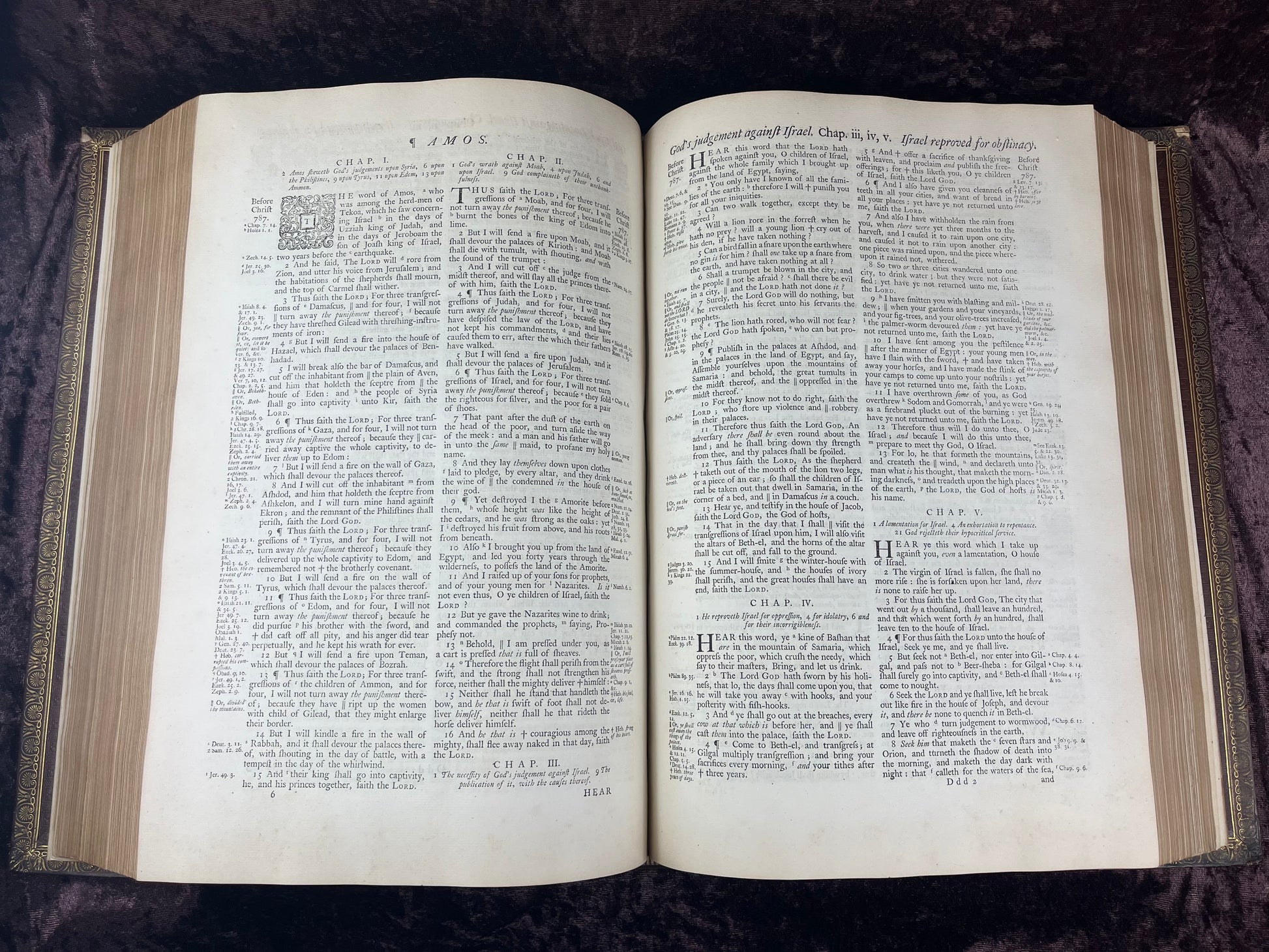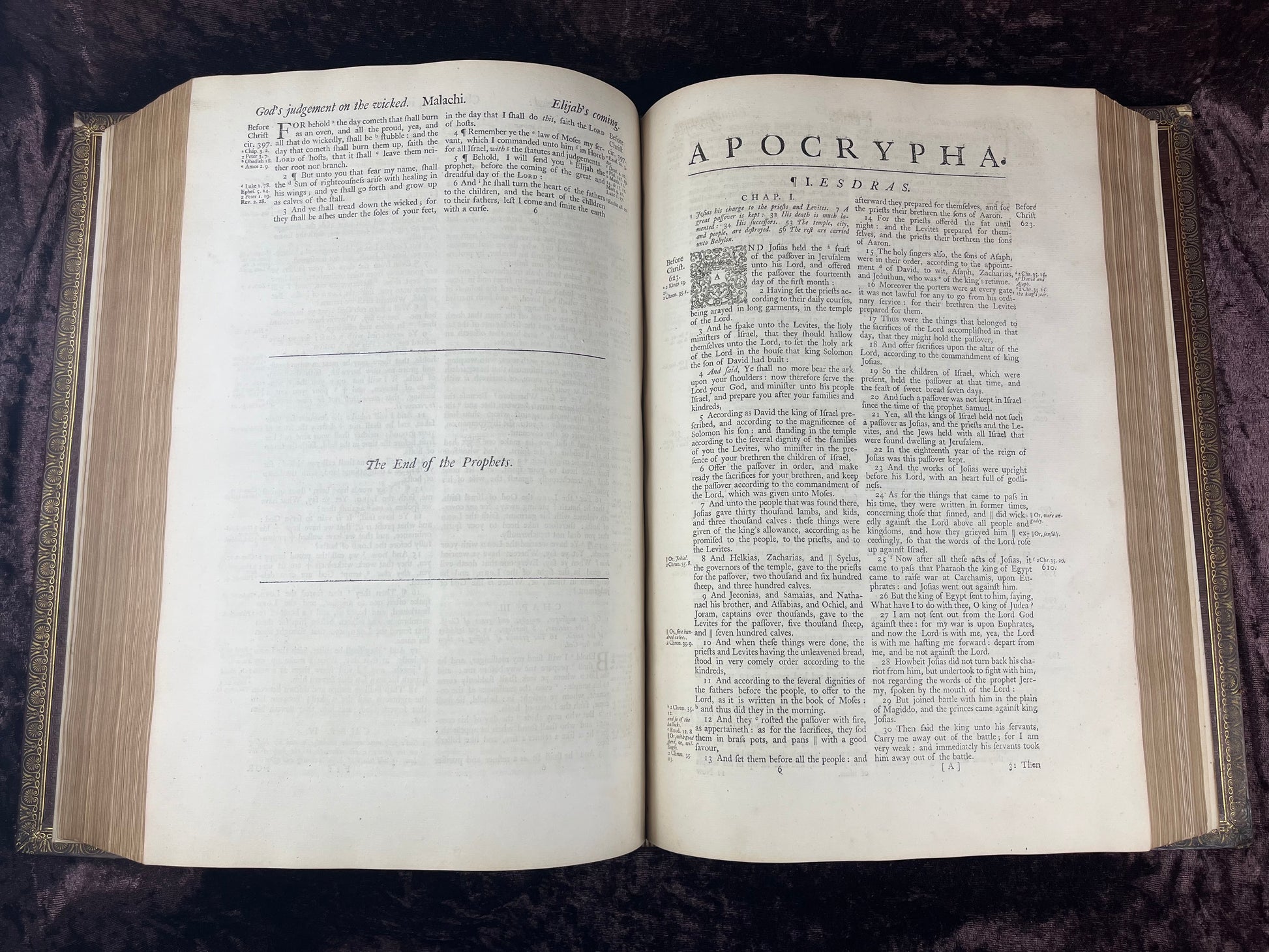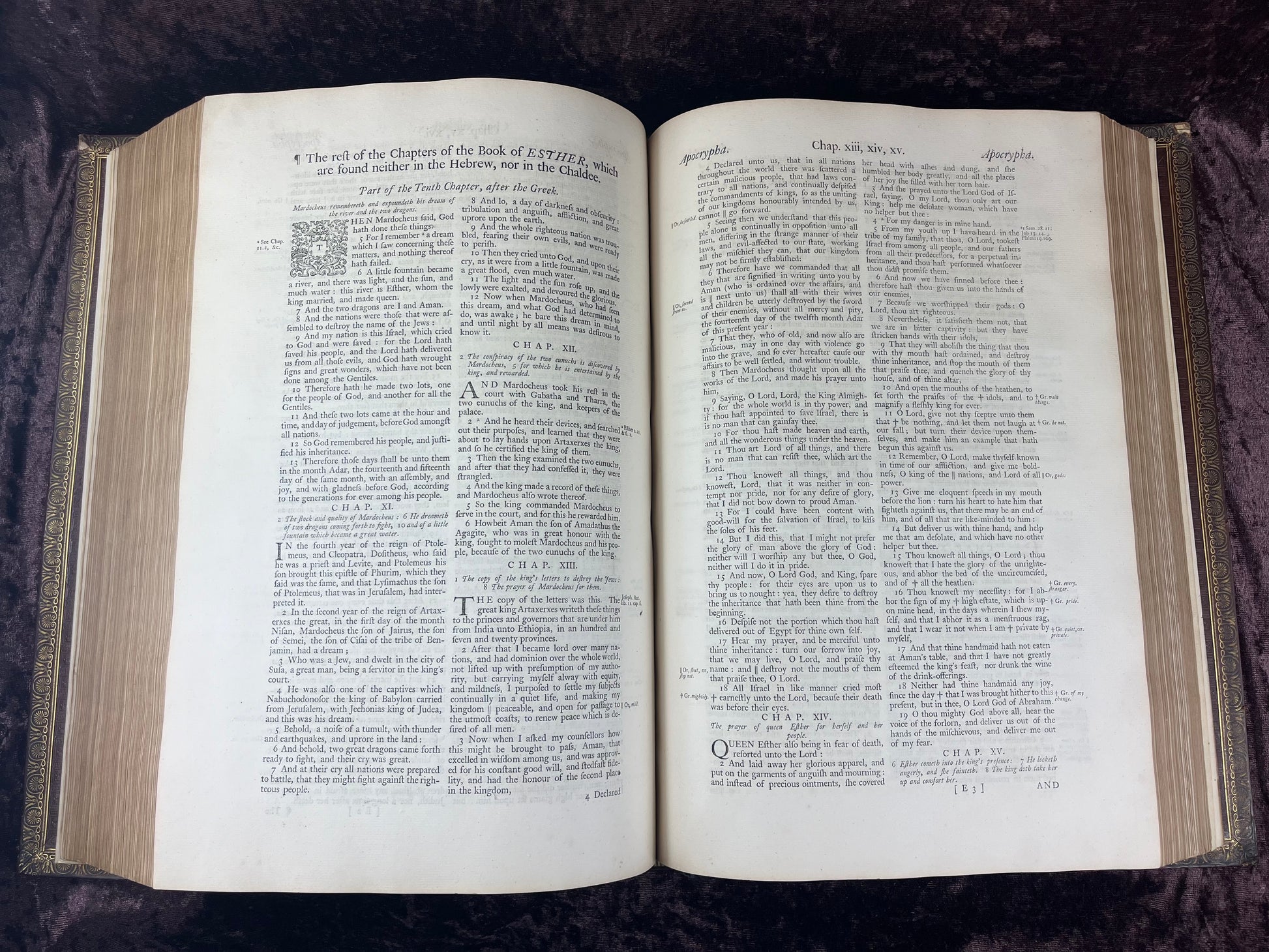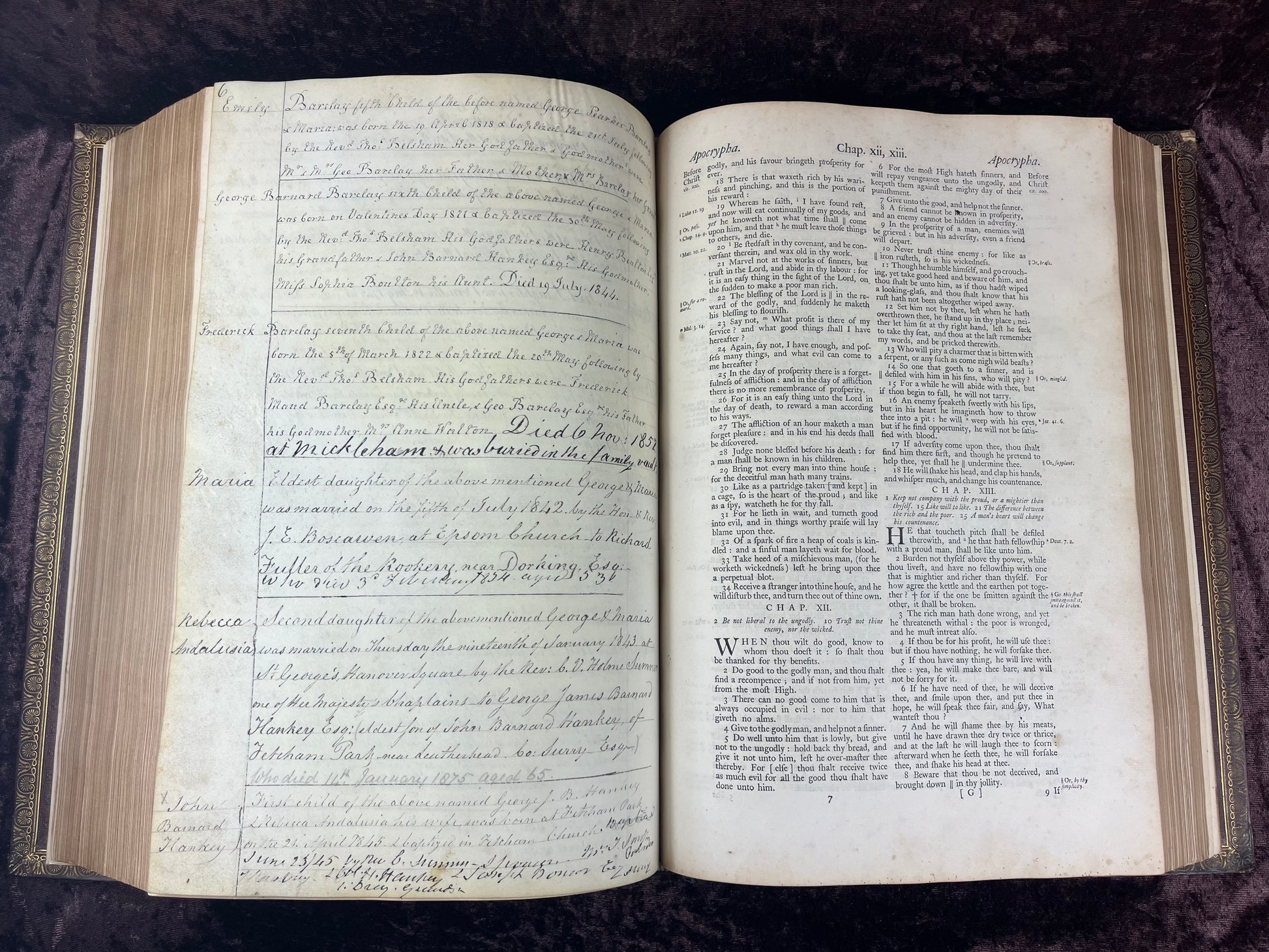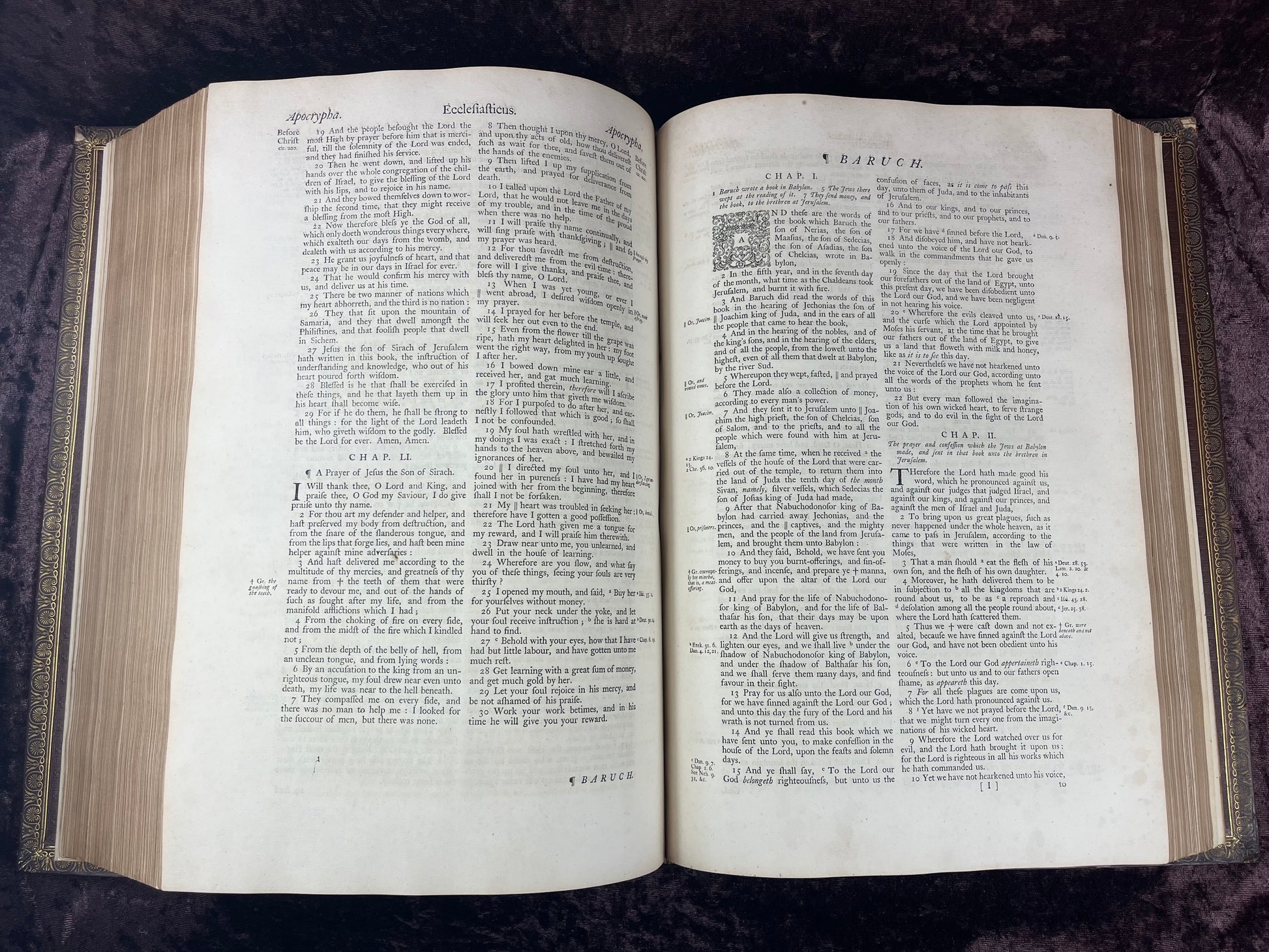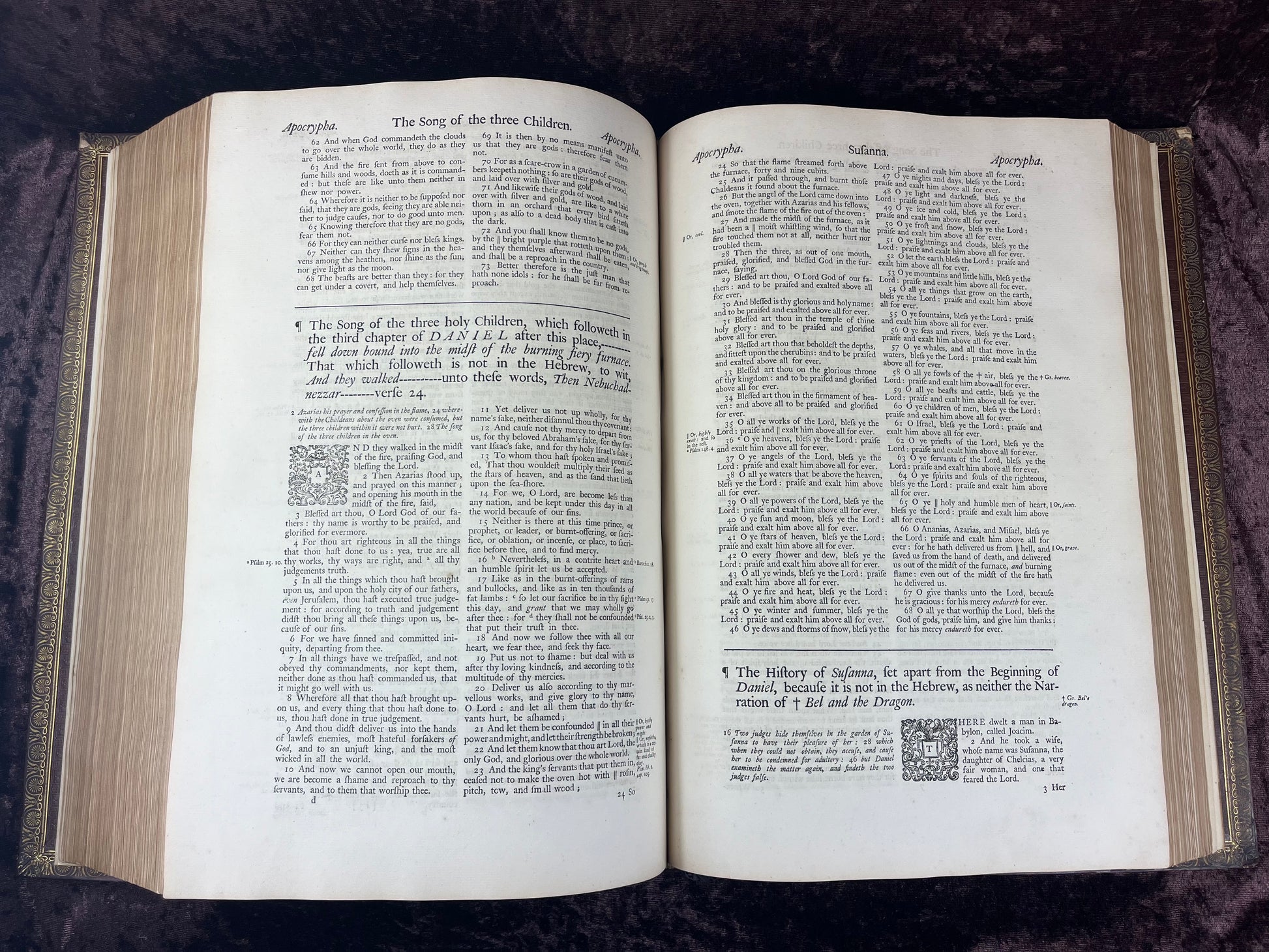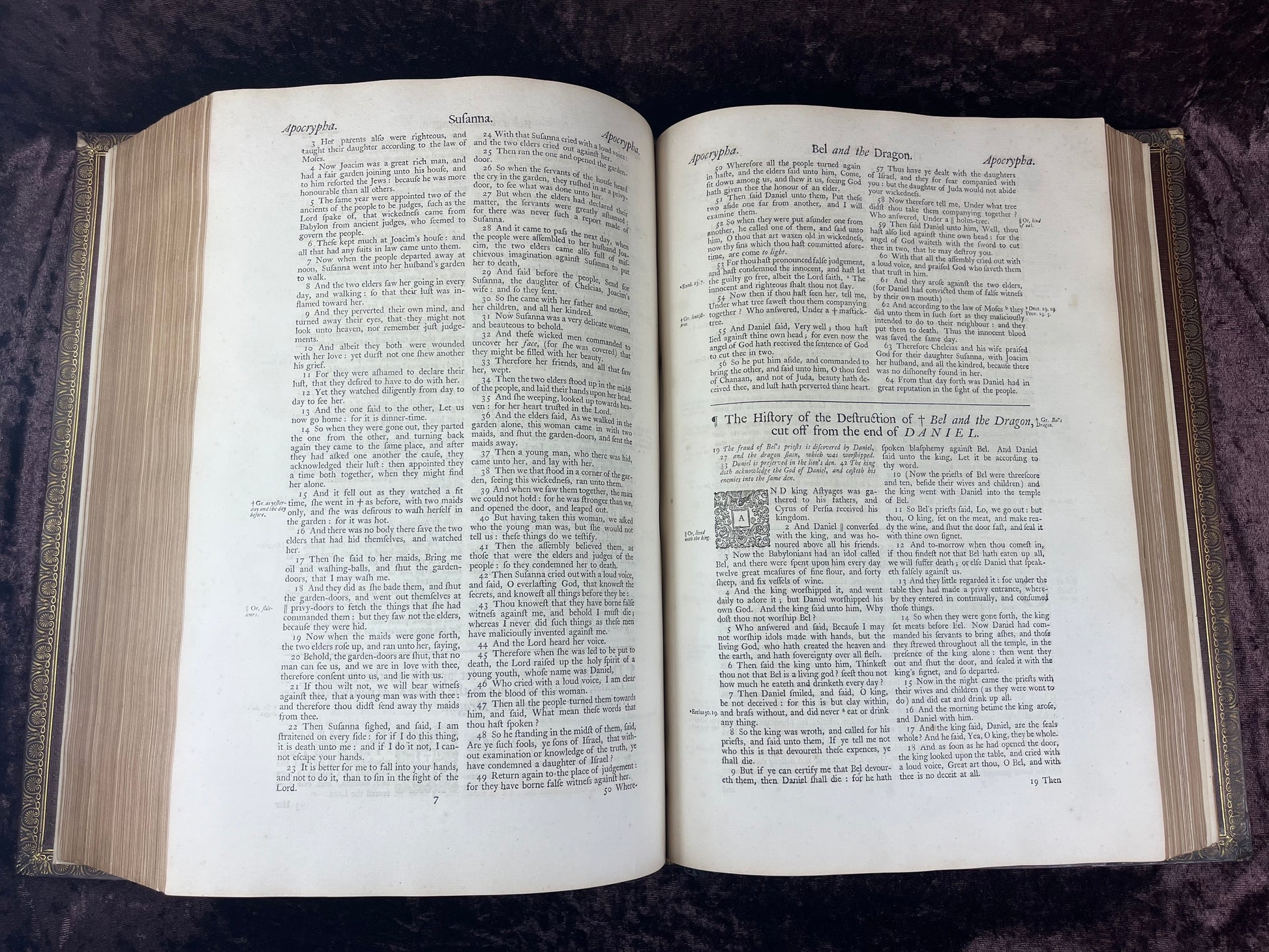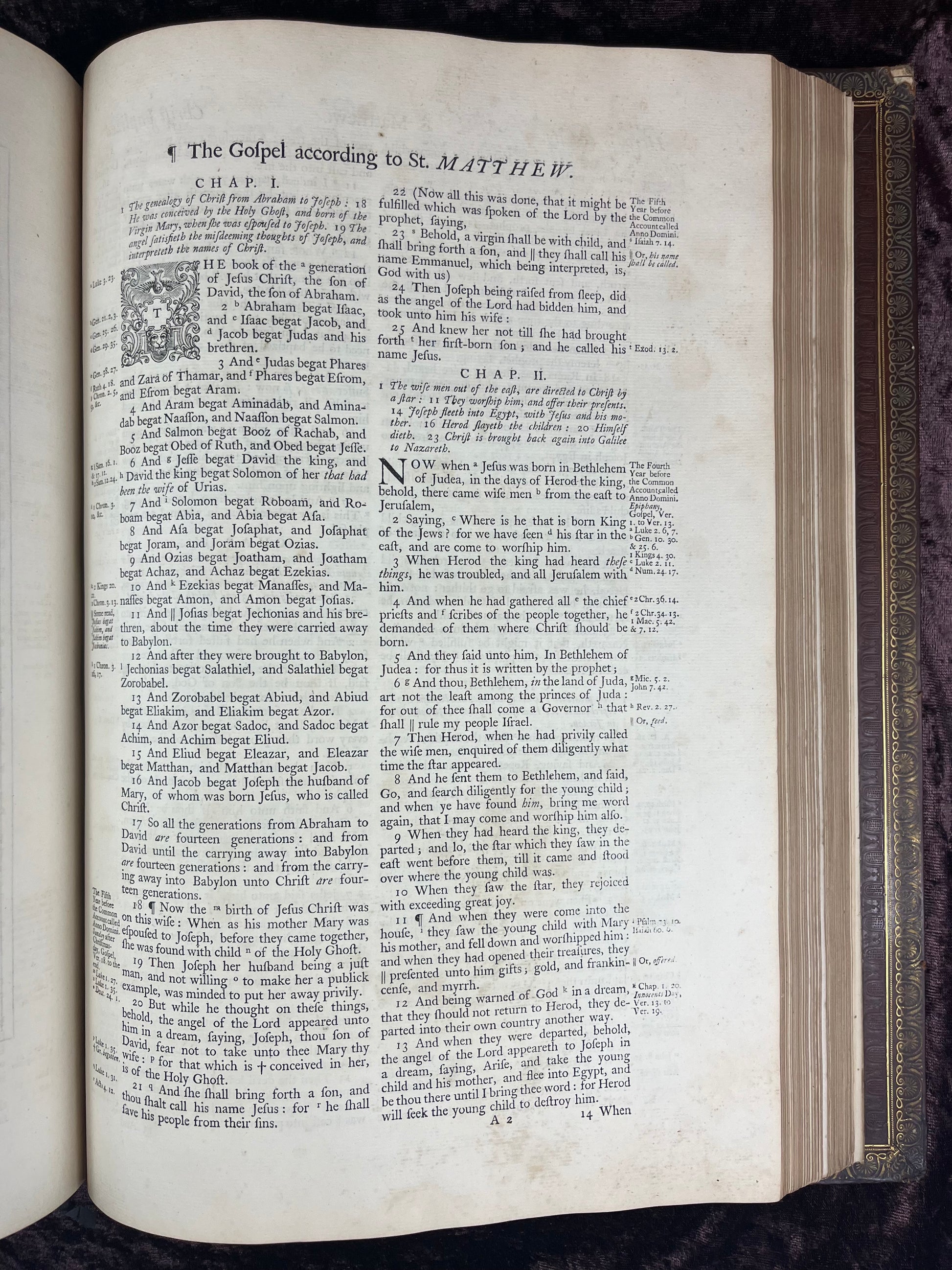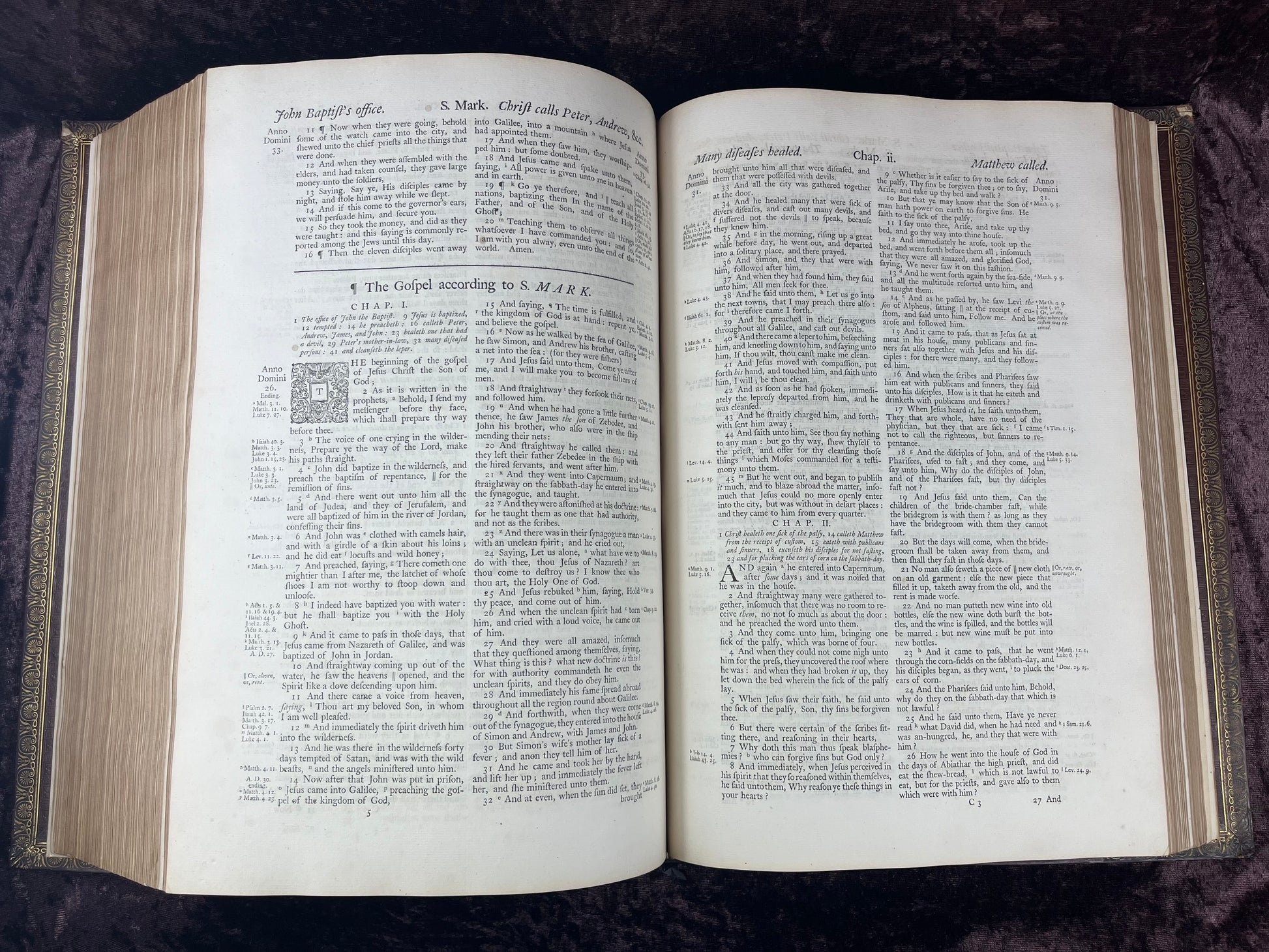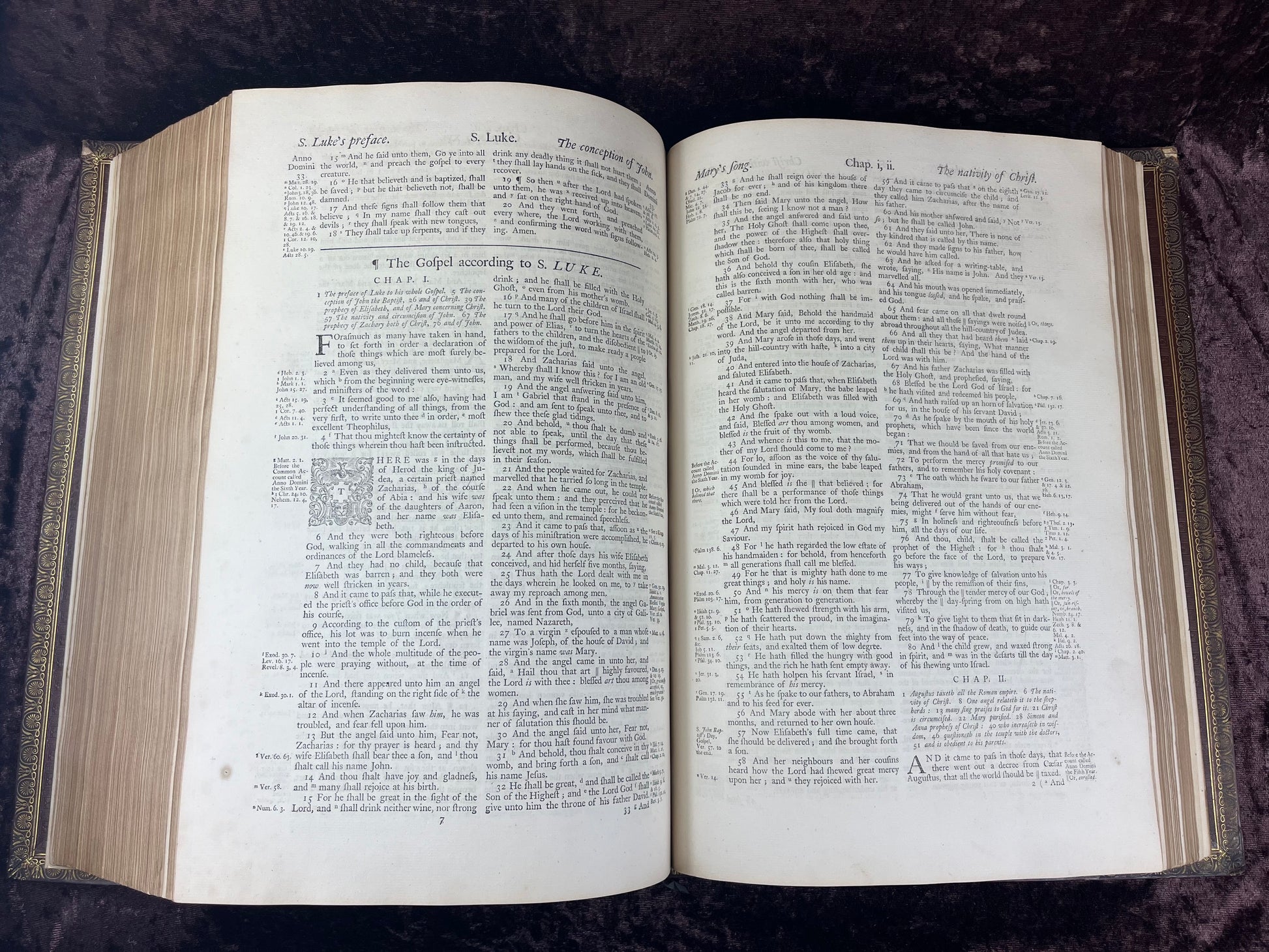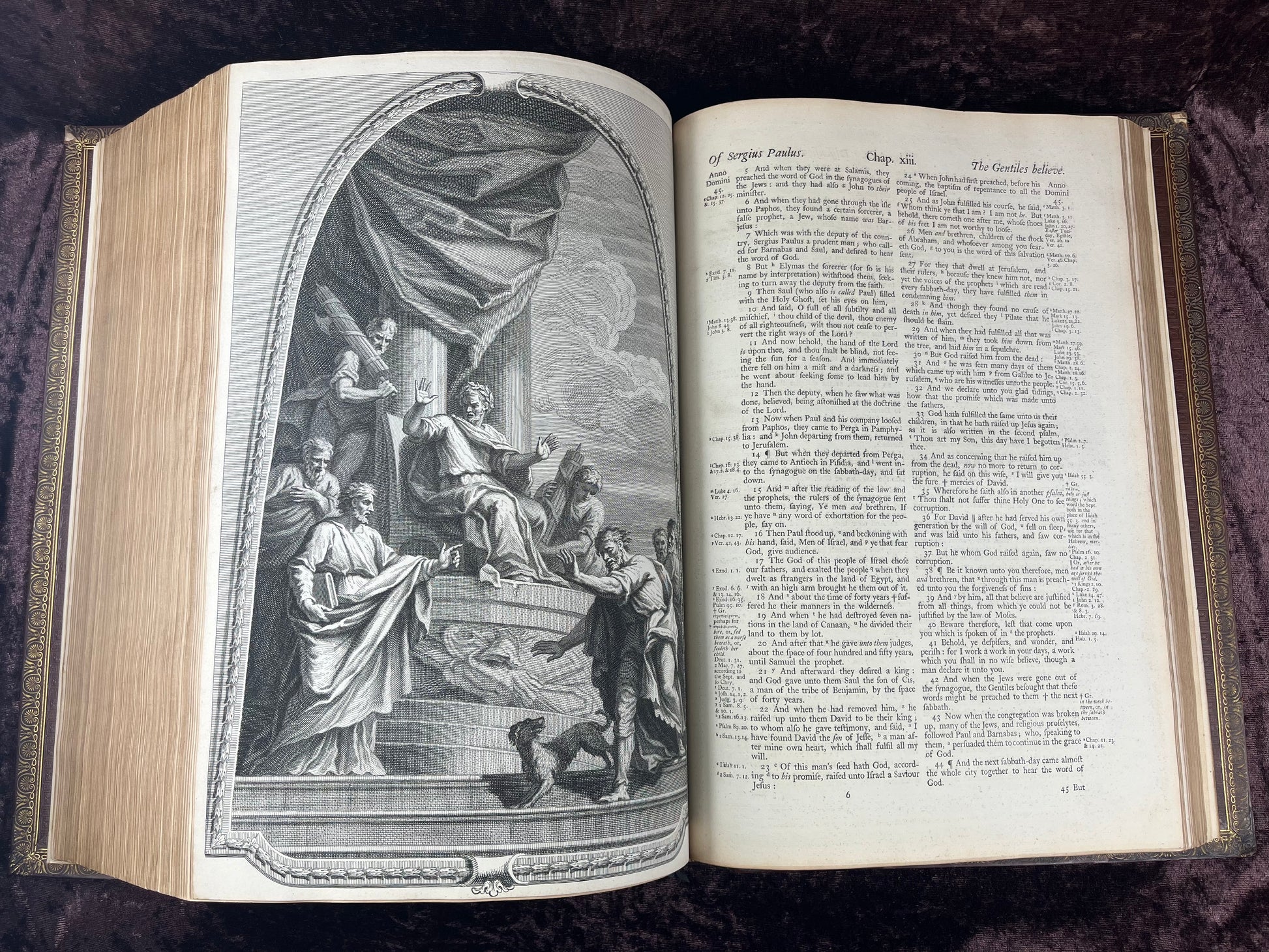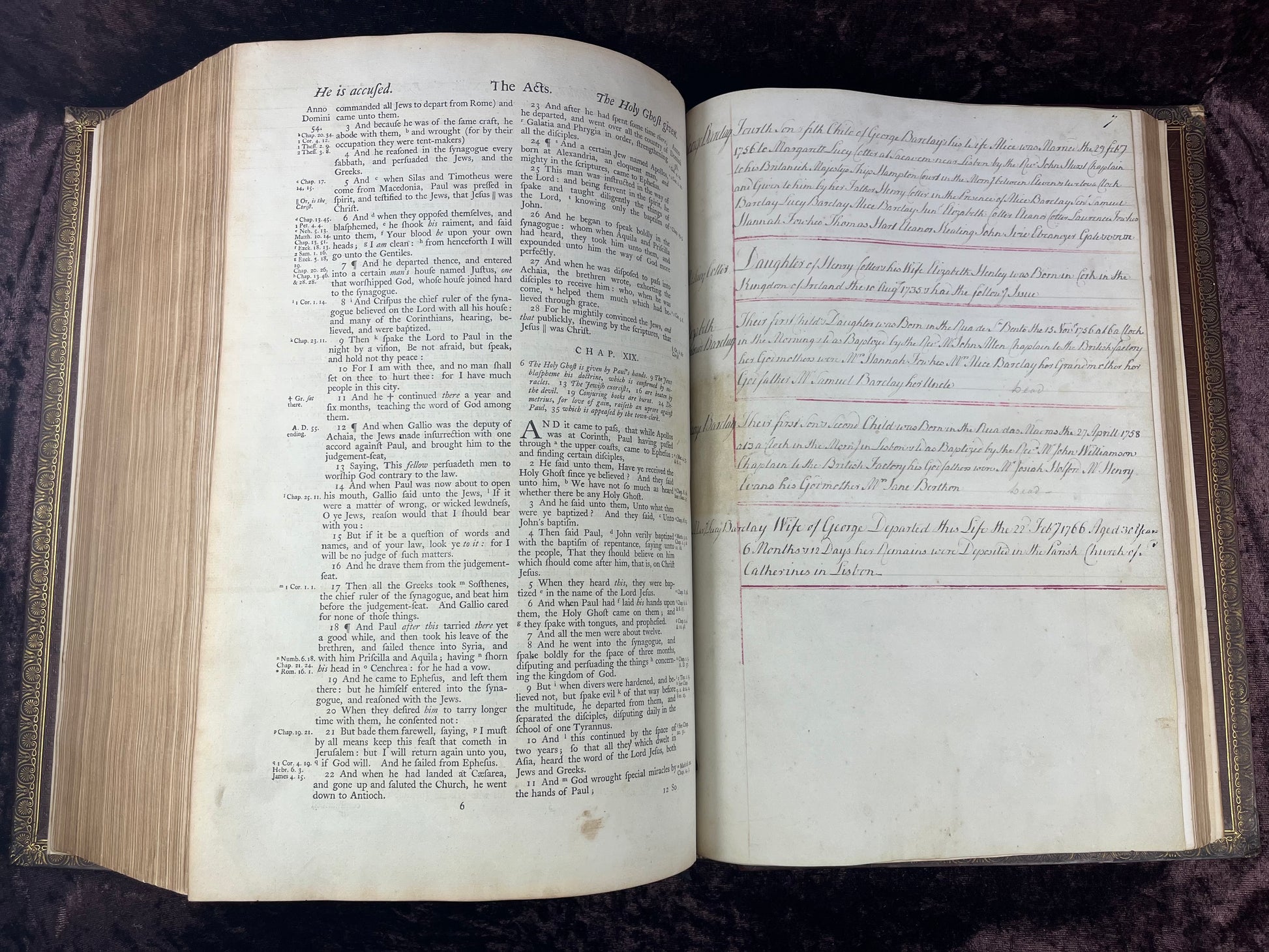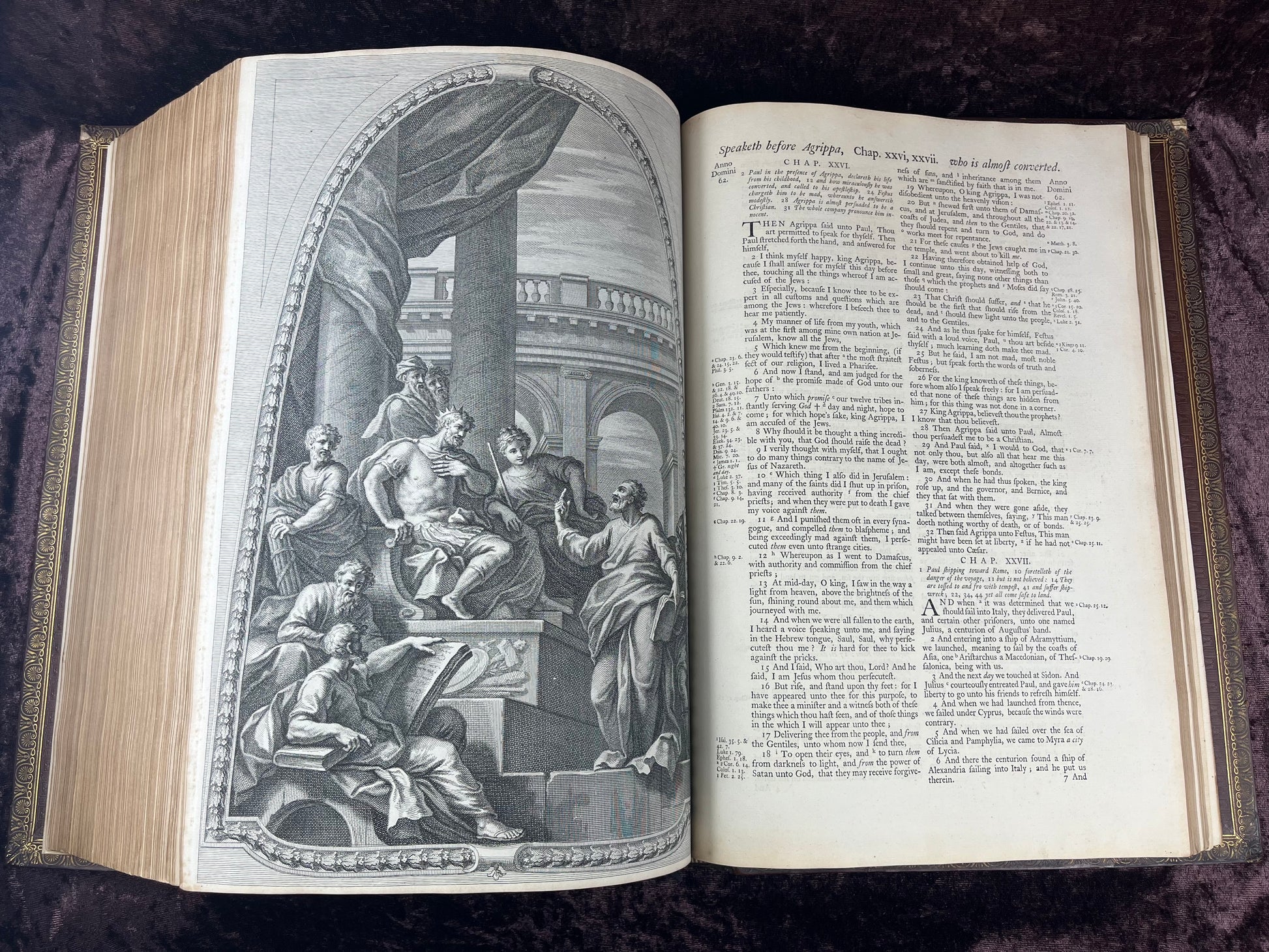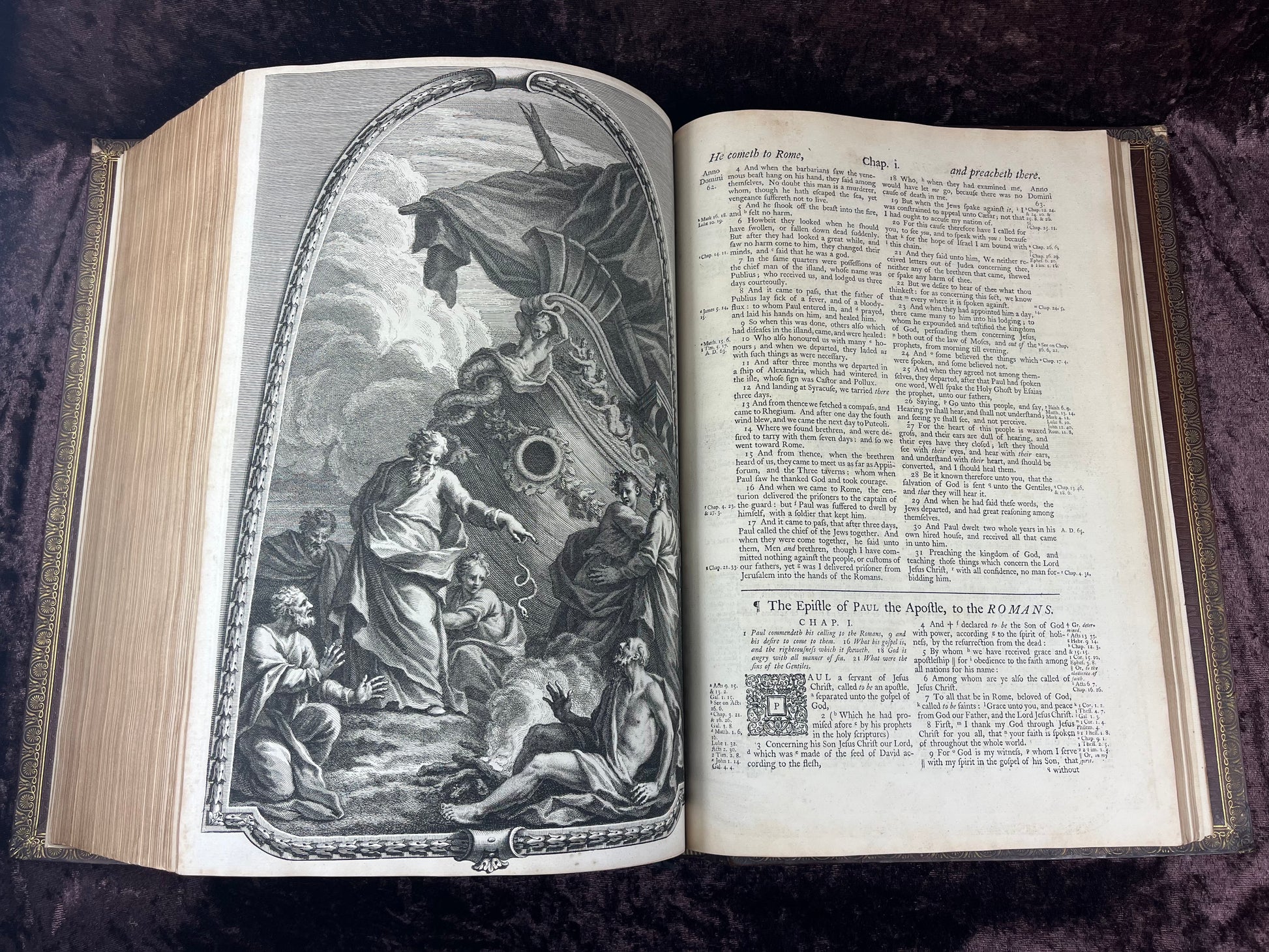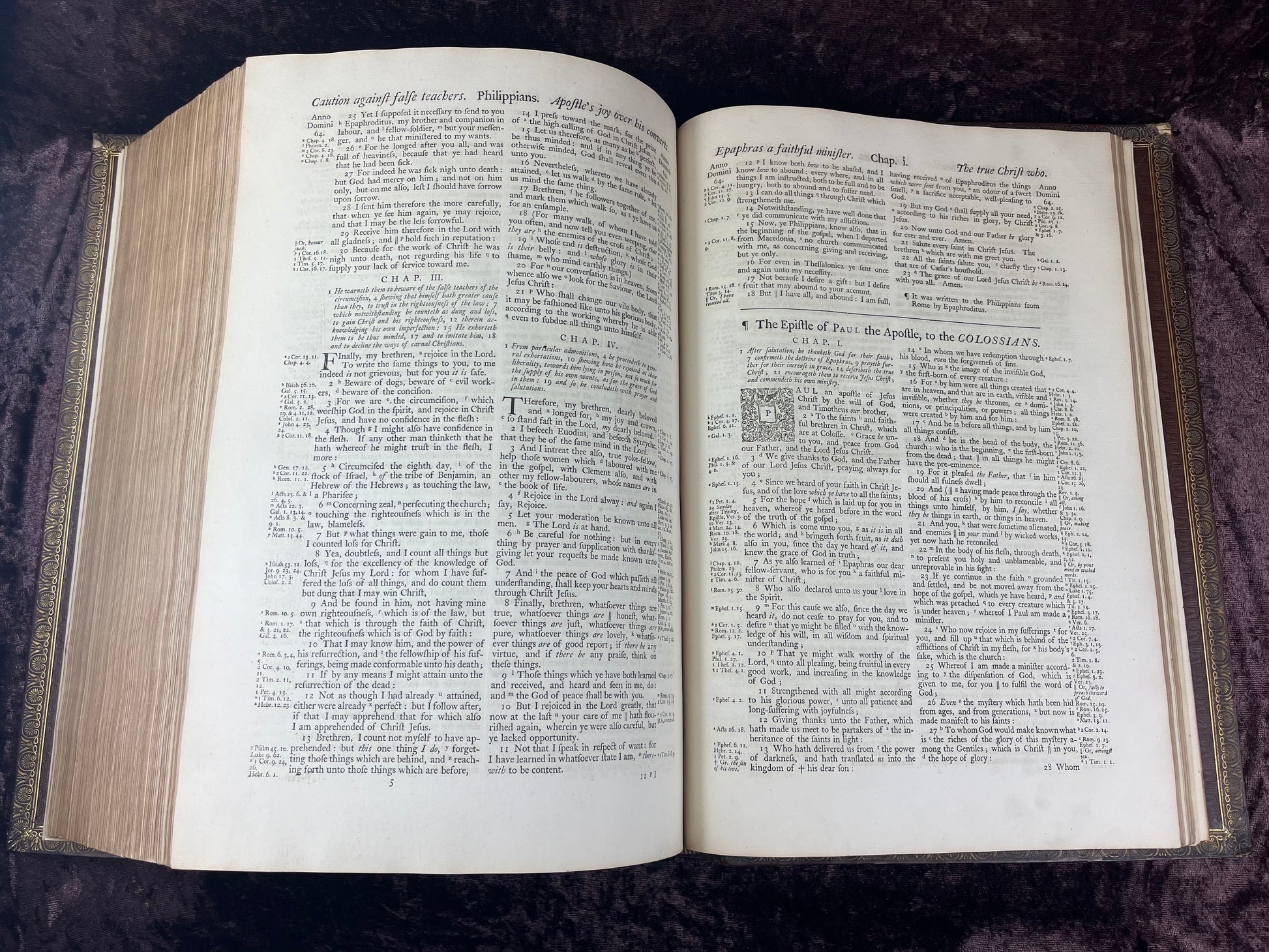1751 Folio First Edition King James Bible Printed By Thomas Baskett-Bound With 16 Extra Illustrations And Was Once Owned By George Barclay Of Burford Lodge
1751 Folio First Edition King James Bible Printed By Thomas Baskett-Bound With 16 Extra Illustrations And Was Once Owned By George Barclay Of Burford Lodge
Couldn't load pickup availability
Share
Importance: A King James Bible printed in London by Thomas Baskett (1709-1761) and published by Robert Baskett in 1751 during the reign of King George II, after he inherited his father’s title as King’s Printer.
This was his first Bible in folio format that he printed. In 1751, the Bible was printed and published in Great Britain during the last full year of the Julian Calendar, right before the Gregorian Calendar was adopted on September 14, 1752.
His father, John Baskett (1664-1742), began printing Bibles in 1711 in London and was famously known for printing the 1716-1717 Folio King James Bible. The Bible was known as the Vinegar Bible, because of the headline above Luke 20 reading Parable of the Vinegar instead of Parable of the Vinyard, and it had so many printing errors that it was also called a Baskett-full-of-errors. After his father died, Thomas Baskett continued with the family business of printing high quality Bibles and other works until his death.
The Bible uses William Caslon’s typefaces, Caslon Old Face Roman & Italic. Caslon’s typefaces were designed between 1720 and 1726 and quickly became popular but fell out of favor in 1800, they were highly esteemed by many and for good reasons. According to Princeton University: The merits of Caslon’s types are its regularity, legibility, and sensitive proportions. Caslon helped to modernize the book, making it a separate creation rather than a printed imitation of the old hand-produced book… Benjamin Franklin, who used Caslon’s typeface to print The Declaration of Independence in 1776, is famously quoted saying: The letters of Caslon, especially the Italick, far surpass any that are to be met with in other Foundries. Caslon’s competitor, John Baskerville, who was a master of typography and printing, is famously quoted saying: admired beyond comparison for the neatness and beauty of their shape and the true proportion of their body.
The Bible is extra-illustrated with 8 single full page and 8 double page copper engraved plates, and is bound in a luxurious late 18th c. to early 19th c. calf. It was notably owned by George Barclay of Burford Lodge, who falsely claimed descent from the prestigious Barclays, renowned for their important roles in the religious and financial spheres.
Sources: *Ford, Julie L. “To Serif or Not to Serif?” Graphic Arts Collection, Princeton University, 10 Sept. 2007.
Binding: Two volumes bound in one. Folio (16.625” x 11.625” x 3.625”). 19 lb 1 oz. Rebacked late 18th c. to early 19th c. blind and gilt tooled full fine brown calf leather binding with a.e.g. Spine with five raised double gilt-filleted and stamped bands, and six compartments blind and gilt stamped. Second compartment with gilt-lettered title in capitals HOLY BIBLE and sixth compartment 1751. Boards with blind-rolled pattern borders (Greek Key Rolls, Foliate and Religious Motifs), gilt-stamped corners, and double gilt-filleted rectangular frames; edges single gilt-filleted and hatched patterns; turn-ins double gilt-filleted twixt blind and gilt-rolled patterns (Foliate and Shell Motifs). Late 18th c. to early 19th c. brown endpapers with four original fly-leaves at front and rear. Presumably expertly rebacked in the late 19th c. to very early 20th c. Traces of wear and scratches.
Provenance: Late 18th c. to early 19th c. bookplates to front pastedown: Top right Benjamin Brockhurst (1707-17??) who was the husband of Sarah Arnold; Top left George Barclay (1755-1819) who was the husband of Rebecca Brockhurst the daughter of Benjamin Brockhurst; Bottom right Henry Peters (1759-????) who was the husband of Charlotte Mary the daughter of General George Morrison; Bottom left Thomas Brockhurst Barclay (1783-1866) who was the husband of Sarah Peters the daughter of Henry Peters. Five leaves interleaved with the Genealogy of the Barclay Family in Lisbon the Kingdom of Portugal. A loosely inserted card containing lessons, very likely by a preacher, last dated July 29th 1906.
Collation & Notes: OT: [310] ff.; [620] pp; A2 ([A1r] GTP), A1, A-Z6, Aa-Zz6, Aaa-Eee6, Fff1v. APOC.: [74] ff.; [148] pp; A-M6, N2v. NT: [100] ff.; [200] pp; A-Q6 ([A1r] TP), R4v. INDEX: [12] ff.; [24] pp; A-F2v. Total [496] ff. & [992] pp.
Complete with two original title pages, index, 8 single full page (by unknown artists and engravers) and 8 double page copper engraved plates on interleaved sheets of Raphaël Urbinas Sanzio’s cartoons by notable engravers with Latin and English captions. Vertical chain lines. Early 19th c. to late 19th c. smooth wove paper fly-leaves (one at front and rear) and six interleaved leaves. Three late 19th c. French MICHALLET modern laid paper fly-leaves at front and rear, they were originally intended for chalk and charcoal drawings, and were used by famous Impressionists like Georges Seurat (1859-1891), Vincent Van Gogh (1853-1890), and William Morris (1834-1896). D&M none. H1091. USTC none. ESTC T82342. WC/OCLC two.
Condition: ff. (15.9375” x 11.1875”). Places lightly foxed, stained, or discolored. OT: Ll6 tail .5” tear & Kk5 head 1.9375” tear. APOC.: N2 tail .5” tear.


